12. GLORY

WESTERN IMPERIALISM
CONTENTS
 Defining "imperialism" Defining "imperialism"
 British India British India
 The British dominions The British dominions
 South Africa South Africa
 The early stages of French imperialism The early stages of French imperialism
 America joins the imperialist game America joins the imperialist game
 Western imperialism in China and East Western imperialism in China and East
Asia
 European imperialism in the Middle East European imperialism in the Middle East
 The partitioning of Africa The partitioning of Africa
 The imperial fallout The imperial fallout
The textual material on page below is drawn directly from my work
A Moral History of Western Society © 2024, Volume Two, pages 25-43.
Imperialism,
put simply, is to impose a society’s will on another society,
exploiting the weakness of the subject society to the benefit of the
dominant society. Imperialism may take all kind of different
shapes. It may be purely economic, controlling the markets, the
labor, the material resources of another society. It may be
demographic, resettling portions of the population of the dominant
society in the lands of the subject society. It may be cultural,
‘converting’ the thinking of the subject society to the thought
processes of the dominant society, thus making it easier to control the
subject society. It may be purely political, replacing the
subject society’s leaders with leaders appointed by the dominant
society ... and similar to political, it may be administrative,
replacing the laws and institutions of the subject society with those
of the dominant society. In most cases in history, imperialism
conducted by one society over another tends to combine elements of all
these types of imperialism.
Imperialism is not a new phenomenon in human history. In fact it
seems to be very central to the dynamics of a society in its rise and
decline. Accusing a society of practicing imperialism is to
accuse it of being aggressively expansive ... rather normal behavior on
the part of a society on the rise. A society on the decline tends
to detest imperialism in principle ... either because it senses that
imperialism of another society is being aimed at it, or because it is
hoping to create a moral universal designed to convince the players of
the social game to accept a freeze of a particular political status quo
that it likes and does not want to lose, but is not ready to defend by
force.
But there are other reasons to find oneself in opposition to
imperialism. If pushed too far it becomes burdensomely expensive,
that is, draining on the resources of the dominant society. And
that has often been the case in history. It worked out this way
for England in its efforts to hang on to its American colonies
(economic and political relations between the two groups actually
improved greatly after England let go of its empire in mid North
America). Spain also found that trying to hang on to its colonies
in America during the Napoleonic wars was a losing proposition, coming
at a time when Spain could ill afford to lose any more power, its
decline had reached such a deep level. The Bourbon kings of
France had more than once emptied their treasuries playing the
imperialism game (which they largely lost anyway in America).
Even Napoleon recognized the burden of American empire, being willing
to sell the entire Louisiana territory to the young American
republic. And so too the Russian tsar sold off his American
holdings in Alaska ... for much the same reason.
|
The Spread of the West's Empires
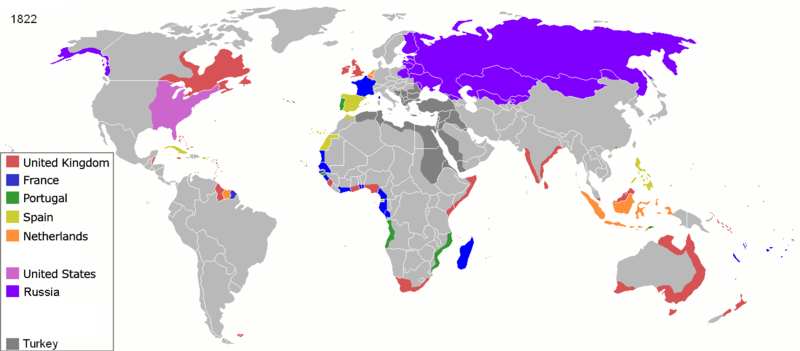
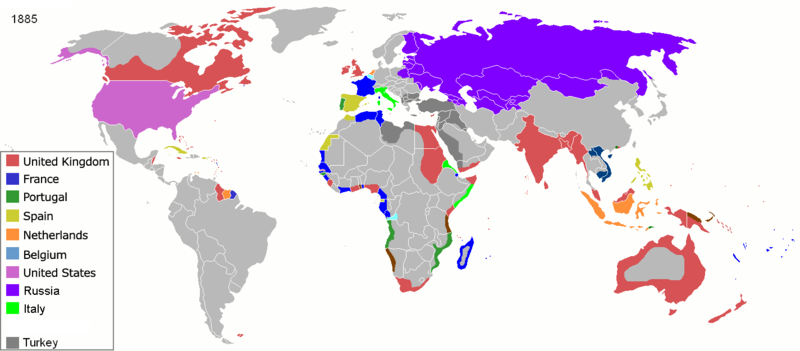
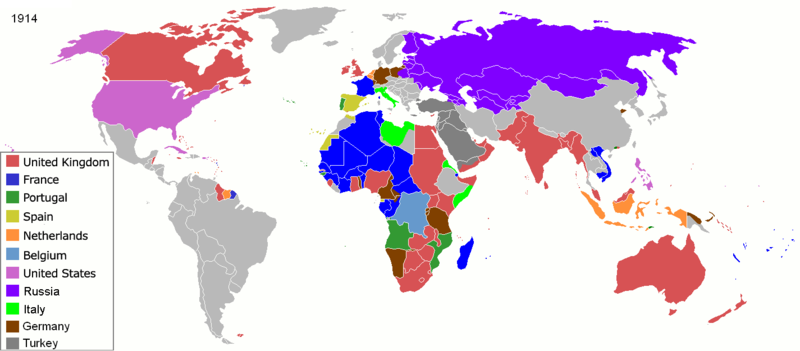
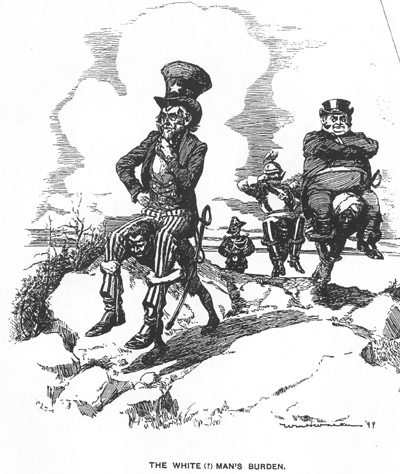 "The White Man's
Burden"
"The White Man's
Burden"
Satire of Kipling's phrase
shows the "white" colonial powers being carried
as the burden of their
"colored" subjects
Yet
for the British, being a small island with a rapidly growing population
and an even more rapidly growing industrial economy, imperialism was
less a choice than a necessity ... not that this was all conducted as
official government policy however; much of British imperialism (at
least initially) was conducted by private corporate interests, such as
the Muscovy Company, the Virginia Company, the Massachusetts Bay
Company ... and most importantly, the English East India Company.
Yet these companies did have close relations with English royalty, in
that they were understood to be vital sources of taxes for the royal
treasury. So there was a lot of cooperation between company and
crown. For instance, it was the dumping of tea of the English
East India Company by angry Massachusetts "patriots" that helped
greatly to push the English crown into confrontation with its colonies
in America, a confrontation that led to the American War of
Independence.
In fact the English East India Company had long been a central piece in
the British imperial program ... for better or for worse. Much
too often it was for the worse. That was the problem in the
confrontation with the American colonies: the profits of the Company
were declining and George III had made the move to allow the sale of
only the Company’s tea in the colonies (the tea of the Dutch East India
Company was much cheaper). This move not only infuriated the
colonies, it sparked much debate in parliament about the wisdom of
mercantilism (political protectionism such as the case with the English
East India Company’s new monopoly on tea sold to America) and whether
mercantilism or "free trade" actually worked better for Britain in the
long run. The argument in favor of free trade (the economics of
free competition) was that it encouraged efficiency and lower prices,
which actually generated a larger market for manufactured goods.
Indeed, the British moved ahead rapidly in the area of free trade,
trying to get other countries to get in the free trade game ... where
Britain had a decided trading advantage. That was their basic
approach in encouraging the 1823 American Monroe Doctrine: rather than
enforcing closed markets such as existed in Spanish America
(mercantilism), all nations should be open for trade with any other
(where the British could easily outsell any competitor). It all
seemed so "fair." Actually, this economic principle advantaged
the British commercial economy tremendously.
But India was a different matter. The English East India Company
had undertaken to create alliances with a number of local Indian
princes or rajas, English power sought by the rajas and Indian markets
for English goods sought by the Company. Initially the
arrangement seemed to work well for both English and Indians.
However as the Company grew in wealth and position it found itself
increasingly in a very commanding position at the heart of Indian
politics. In subtle ways, by the beginning of the 1800s the
Company (referred to now as the British East India Company) found
itself in a governing position in large sections of India not very
different from that of a traditional Indian imperial government
(governing the three constantly expanding presidencies of Bombay,
Bengal and Madras). As such the Company attempted to act the part
of the benevolent emperor, improving roads, installing railroads, dams,
canals and reservoirs, instituting legal reforms ending suttee (the "self-inflicted" death of widows at their husbands' funerals), etc. as a way of
winning the hearts of the Indians.
But vast cultural differences made the task of uniting the Company’s
interests with the Indian soul very difficult. The British could
not understand that reforming the highly discriminatory caste system
did not bring approval but instead confusion and frustration among the
Indians. Many of the industrial improvements brought by the
English (such as the telegraph) even stirred fears among the Indians
that the British had introduced something very sinister among
them! Also the move of the Company to take over an Indian state
when an Indian prince died without an heir – or even just when the
British deemed the prince incompetent – stirred deep bitterness among
many Indians.
|

Robert Clive meeting with the Indian Nawab's commander, Mir Jafa,
after the Battle of Plassey in 1757 ... bringing British control to Bengal
as the beginning of the British expansion in India
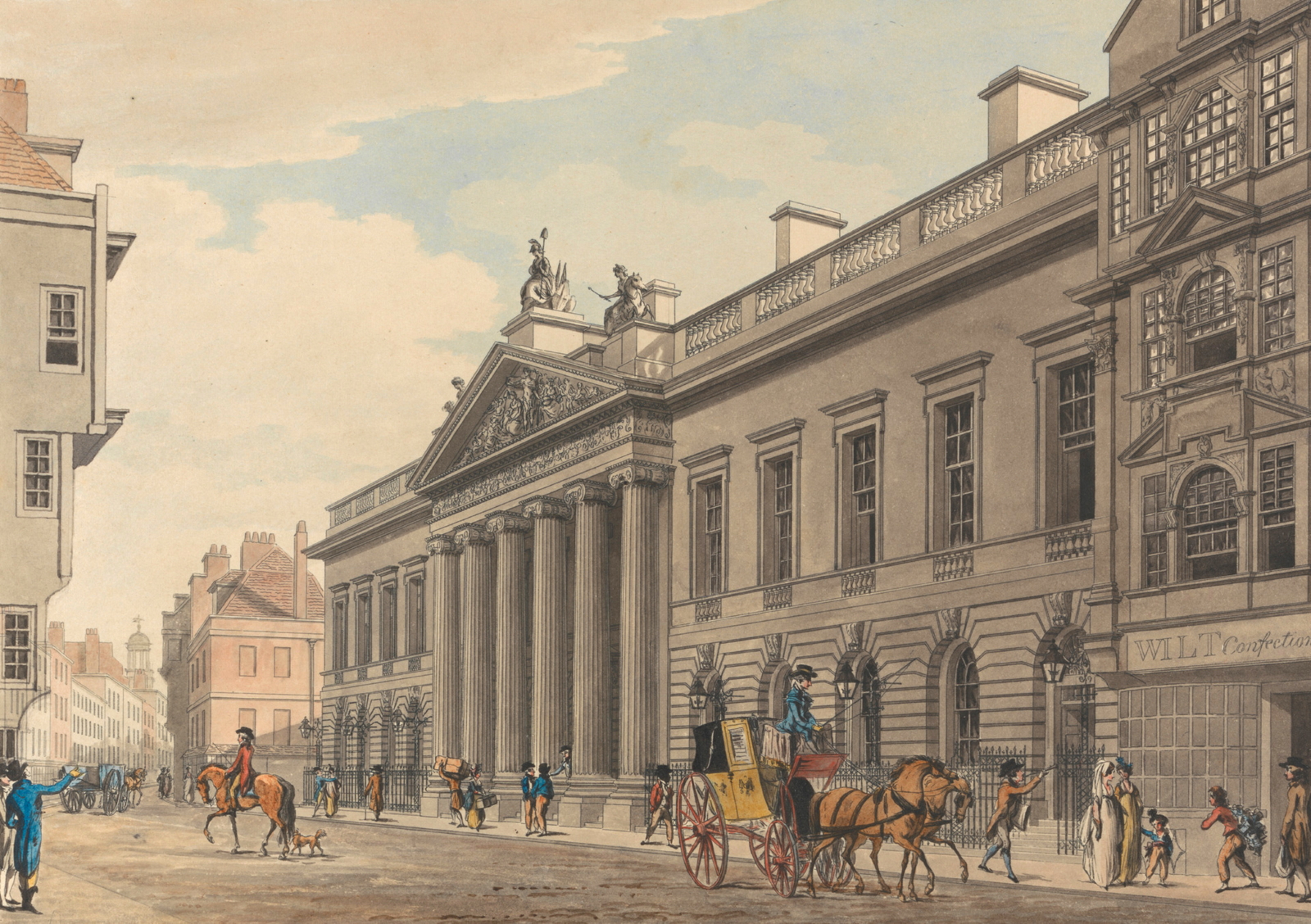
The Company's offices at the East India House - London - by Thomas Malton
The Yale Center for British Art
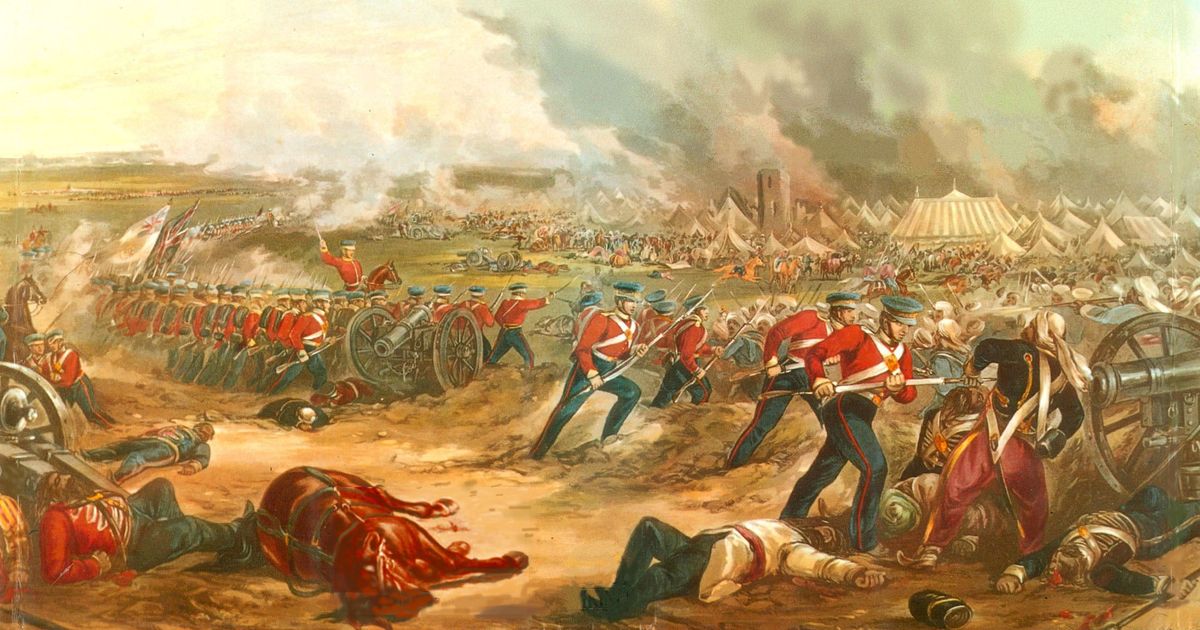
Troops of British East India Company against the troops of the Sikh Empire at the Battle of Ferozeshah - 1845
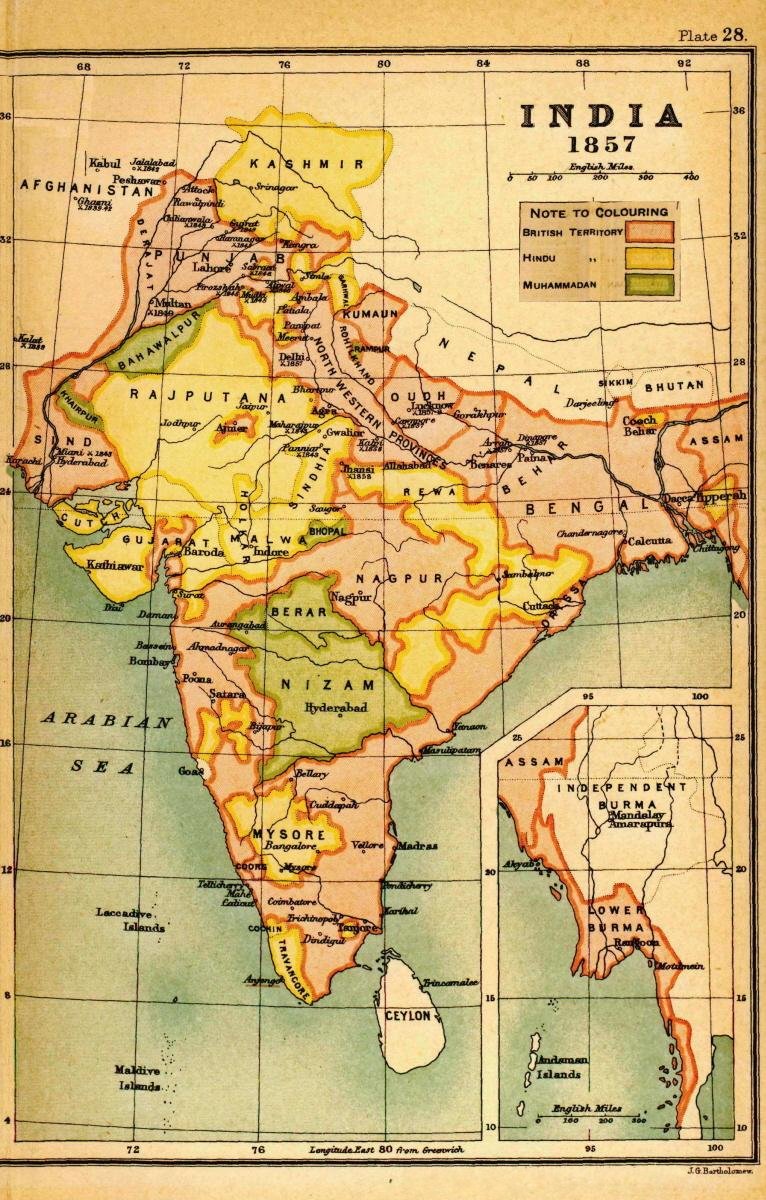
British India as of 1857 (directly adminstered lands in pink
... but in "understanding" with the Hindu and Muslim principalities)
|
The Sepoy Mutiny of 1857
Finally there was the matter of the new cartridges shipped from England
for use by the sepoy (Indian) troops in the employ of the
Company. Rumors spread rapidly that these cartridges had been
greased in the fat of pigs and cows, to protect them from the dampness
of the sea journey. In the eyes of the Muslim sepoys pork fat was
highly polluting and in the eyes of the Hindu sepoys cow fat was in
violation of the basic sacredness of all life ... but especially the
cow, whose life was considered more sacred than human life. When
English officers saw this refusal to use these cartridges as simply
insubordination – and when it appeared to the sepoys that their British
officers were not going to back down – rebellion broke out up among the
sepoys and spread rapidly across northern India. Not only
officers but civilians, women and children as well as men, were
murdered by angry sepoys ... with British troops then responding in
kind. The slaughter on both sides was terrible.
The timing for the British was terrible also because most of the
British troops were away fighting in the Crimean war. However
loyal Indians troops contributed greatly to the British effort to
regain control over the situation ... nonetheless taking six months to
bring the rebellion to an end. Overall it was all a scandalous,
bloody mess.
|
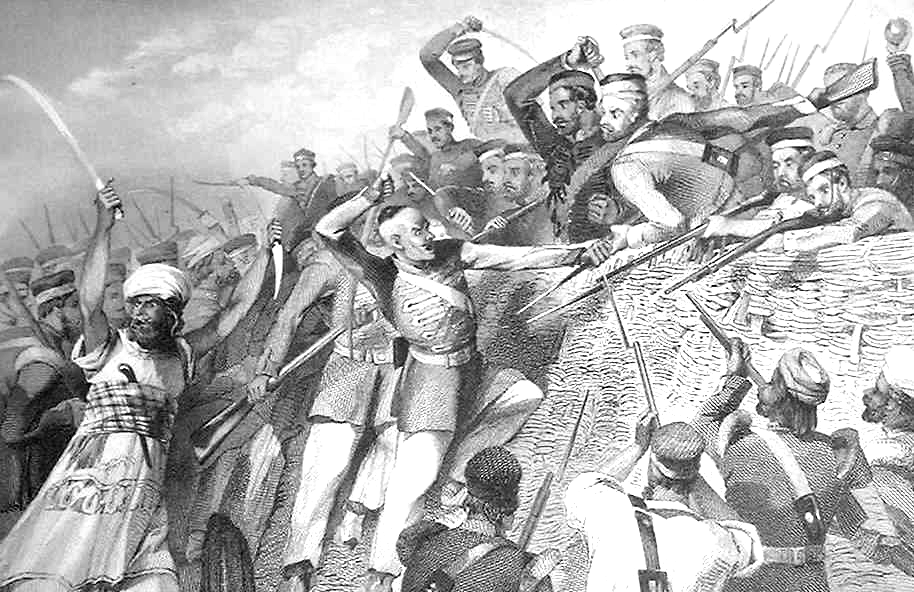
The Sepoy mutiny - 1857

British troops reacting to the six-month seige of Lucknow – November 1857

Interior of the Secundra
Bagh after the Slaughter of 2,000 Rebels
by the 93rd Highlanders
and 4th Punjab Regiment (skulls and bodies scattered about).
First Attack of Sir Colin
Campbell in November 1857, Lucknow. Albumen silver print, by
Felice Beato, 1858.
|
Victoria, Empress of India
The net result was that in 1858 the British parliament ended the
Company’s charter and transferred to the crown as part of the British
Empire (the Indian portion of the Empire known as the British
Raj). Under Queen Victoria’s instructions the public works
programs begun by the Company in India (particularly transportation and
education) were extended greatly, transforming India into a budding
industrial society with a growing awareness of modern
democratic-national political norms. So devoted was she to the
development of India that in 1876 she took upon herself the title
"Empress of India."
|
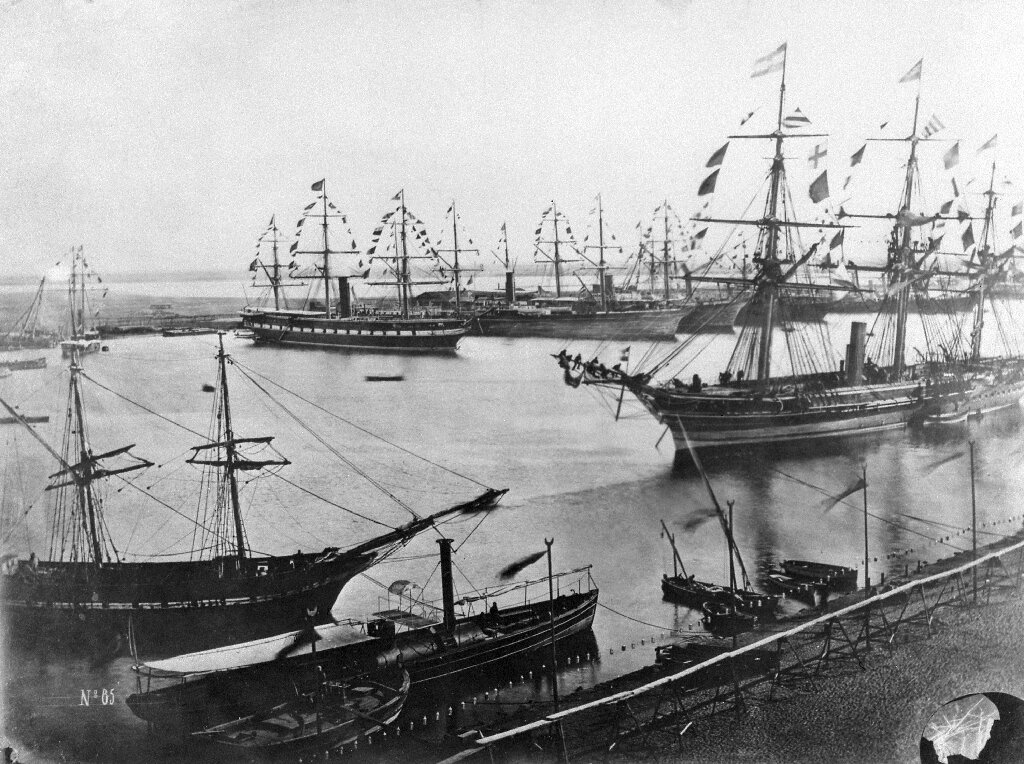
1869 - The opening of the Suez Canal - offering a very direct sea route to India and East Asia
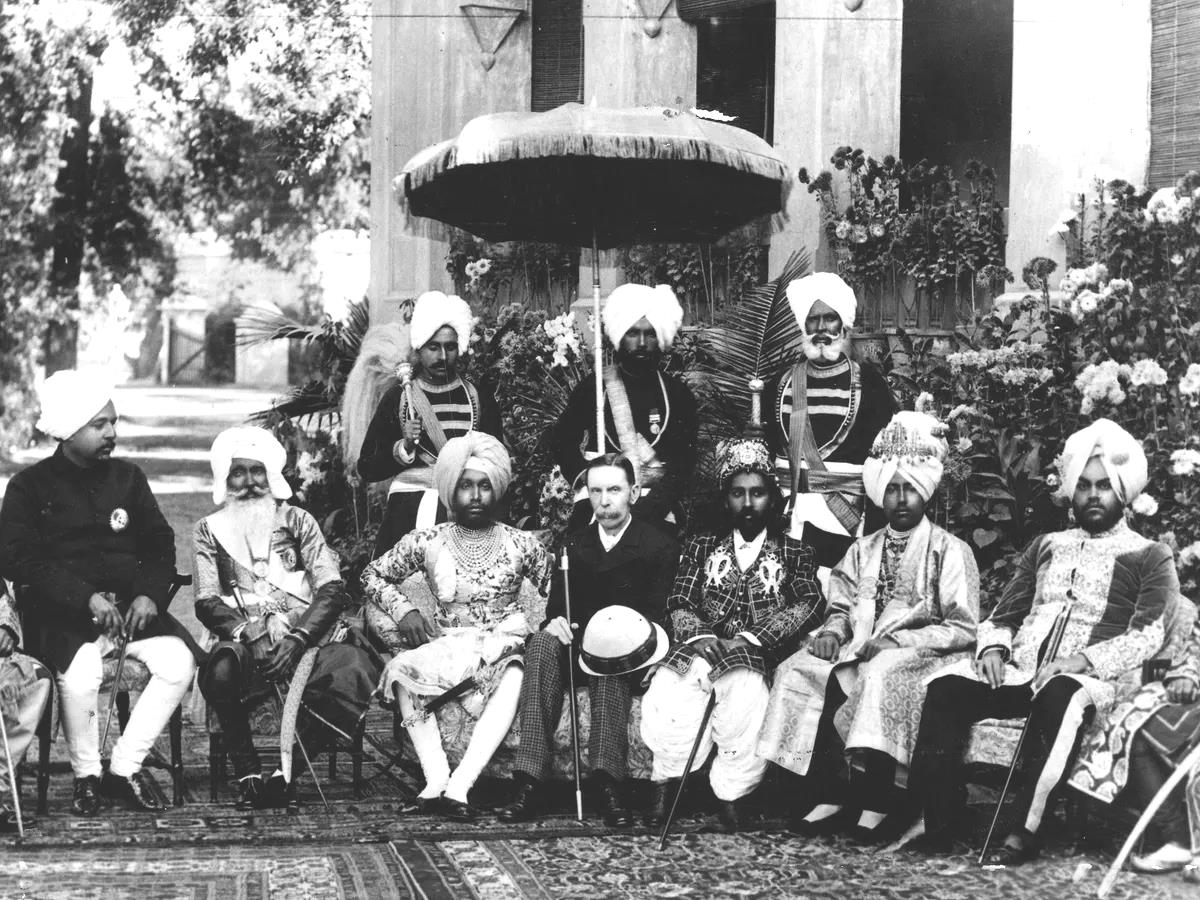
British Lt. General of Punjab taking tea with Punjabi maharajas and rajas - 1875

Victoria – Empress of India (1887)
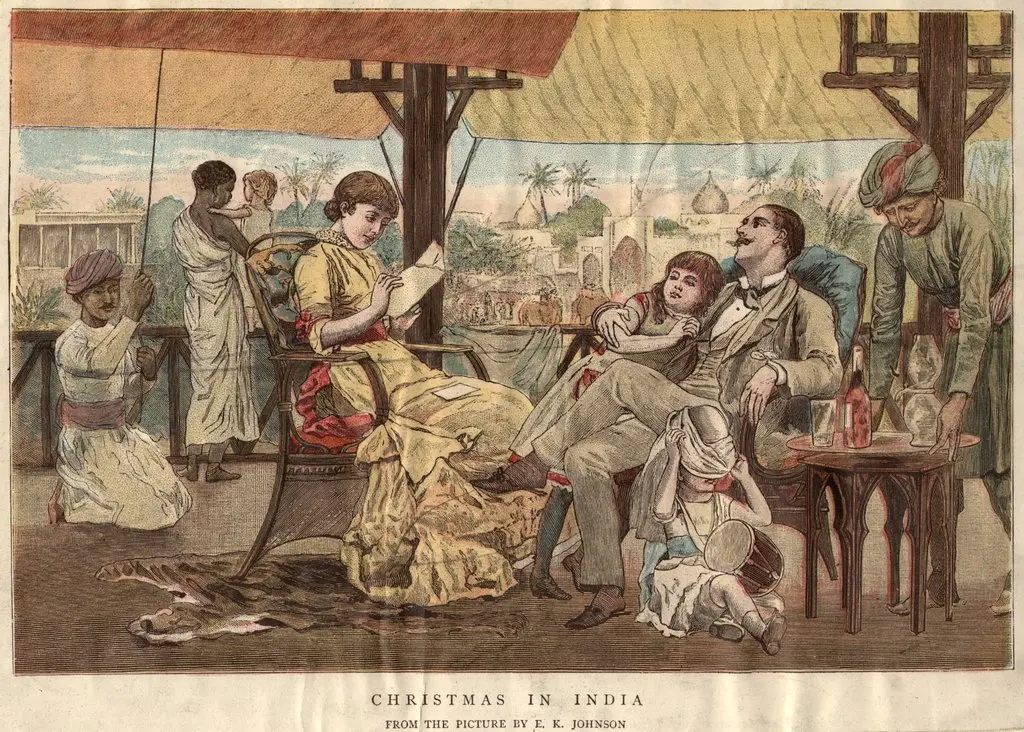
The leisured life of the British gentry in India - c. 1900
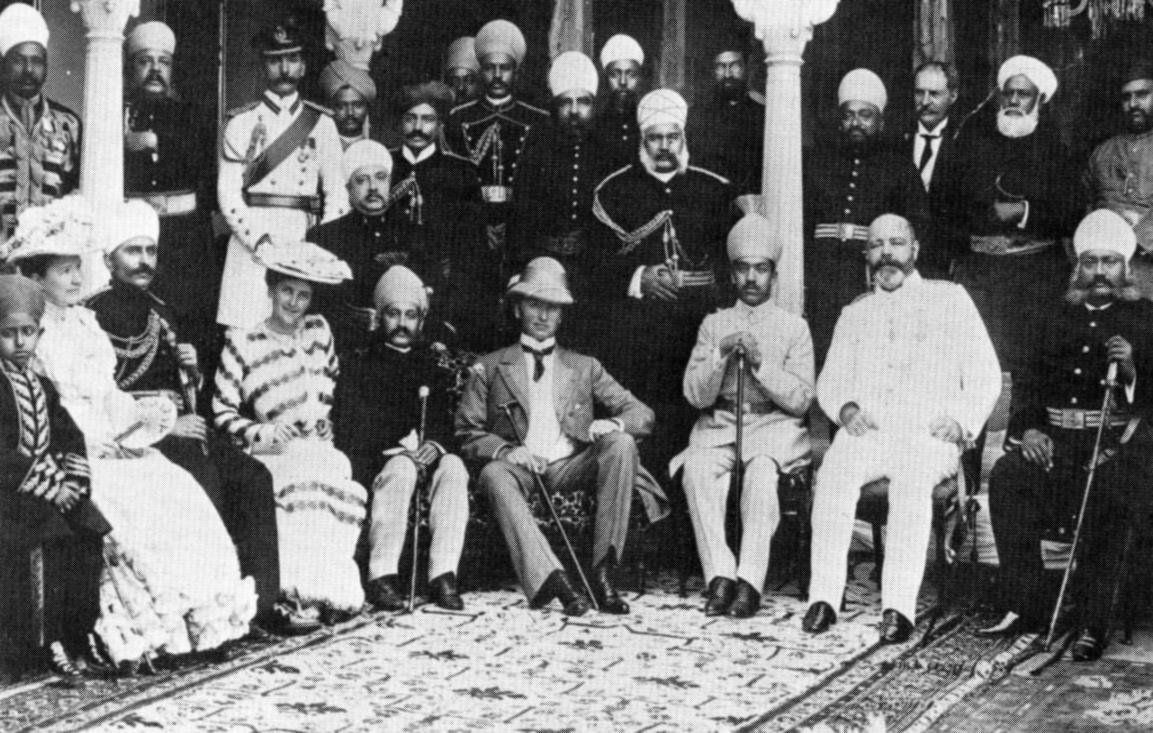
British Viceroy Lord Curzon
and the Nizam of Hyderabad - 1900
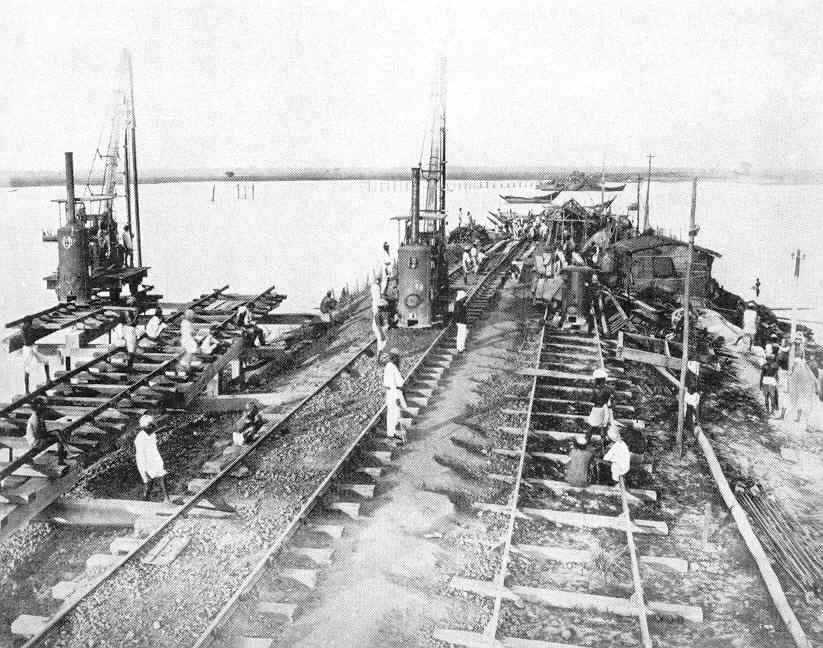 Building the Indian
railway
Building the Indian
railway
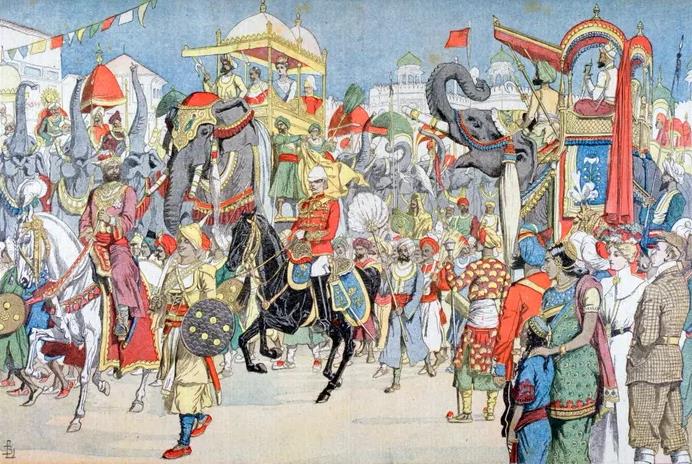 The Delhi Durbar - 1903
The Delhi Durbar - 1903
A British-Indian celebration of the coronation of King Edward VII
and Queen Alexandra as Emperor and Empress of India
Nonetheless despite Victoria’s (and her successors) positive intentions, Indians were
ambivalent about British reforms. On the one hand the British idea of the
equality of all citizens within the Empire undermined the caste system,
which stood as the foundation of traditional Indian society. On
the other hand there was something hypocritical about the ideal of
equality in the way Indians felt looked down on by the English, causing
irritation especially among the more Westernized Indians who were
expecting more egalitarian treatment, but did not find this to be
actually the case no matter how hard they tried to be "English."1
Much like the case in Ireland, the demand for "Home Rule" (not quite
independence but at least a lot of political autonomy within the
British Empire) began to grow in India. But, as in Ireland, these
would be largely ignored by the British authorities.
1Gandhi
was a classic example of an Indian who turned bitterly against things
English when, despite his 40+ year effort to measure up as "quite
British," found himself looked down on because of the color of his
skin.
 Mohandas Gandhi at his law
office in South Africa - 1914
Mohandas Gandhi at his law
office in South Africa - 1914
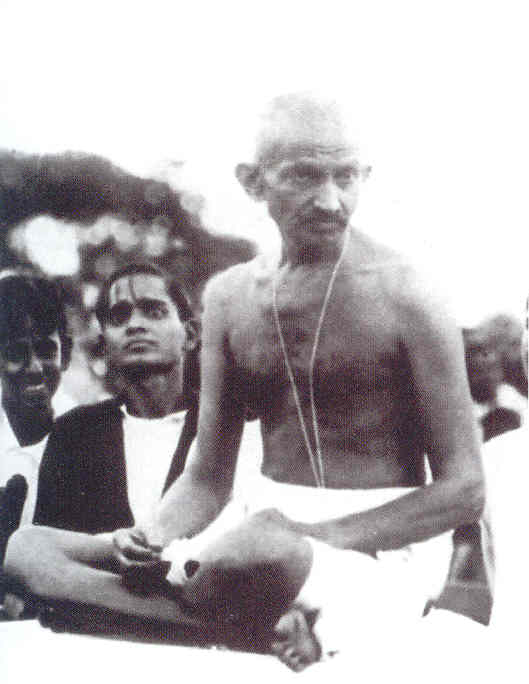 The post-1915 lawyer Gandhi ... posing as something of a Hindu "holy man"
The post-1915 lawyer Gandhi ... posing as something of a Hindu "holy man"
|
Canada
During the 1830s there was a growing demand for political reform all
through Europe. This was no less the case for the English and
French provinces in Canada. Although they each had their own
legislatures, their governors were appointed by the crown, not by the
leading local political party. Armed revolt actually broke out in
Canada in 1837 causing the colonial office to take the matter of reform
seriously enough that in 1846 the Canadian legislatures were finally
given control over the appointment of their provincial governors.
Then in 1867 the British parliament passed the British North America
Act, uniting as a new federation or "Dominion" the English and French
provinces of upper and lower Canada, plus Nova Scotia and New
Brunswick. The new Dominion was given a federal parliament (with
a House of Commons and a Senate) located at Ottawa. Although the
Governor-General was appointed by the British crown, the real executive
power was vested in the prime minister, who functioned in Canada
similar to the prime minister in England.
|
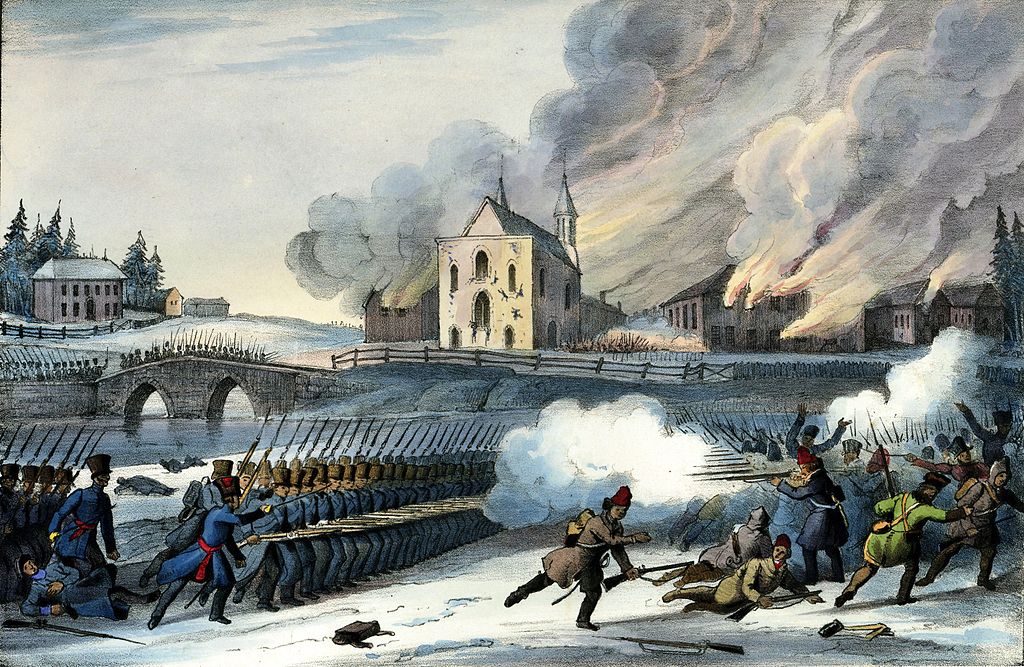
1837 - The French portion of the rebellion at St Eustache
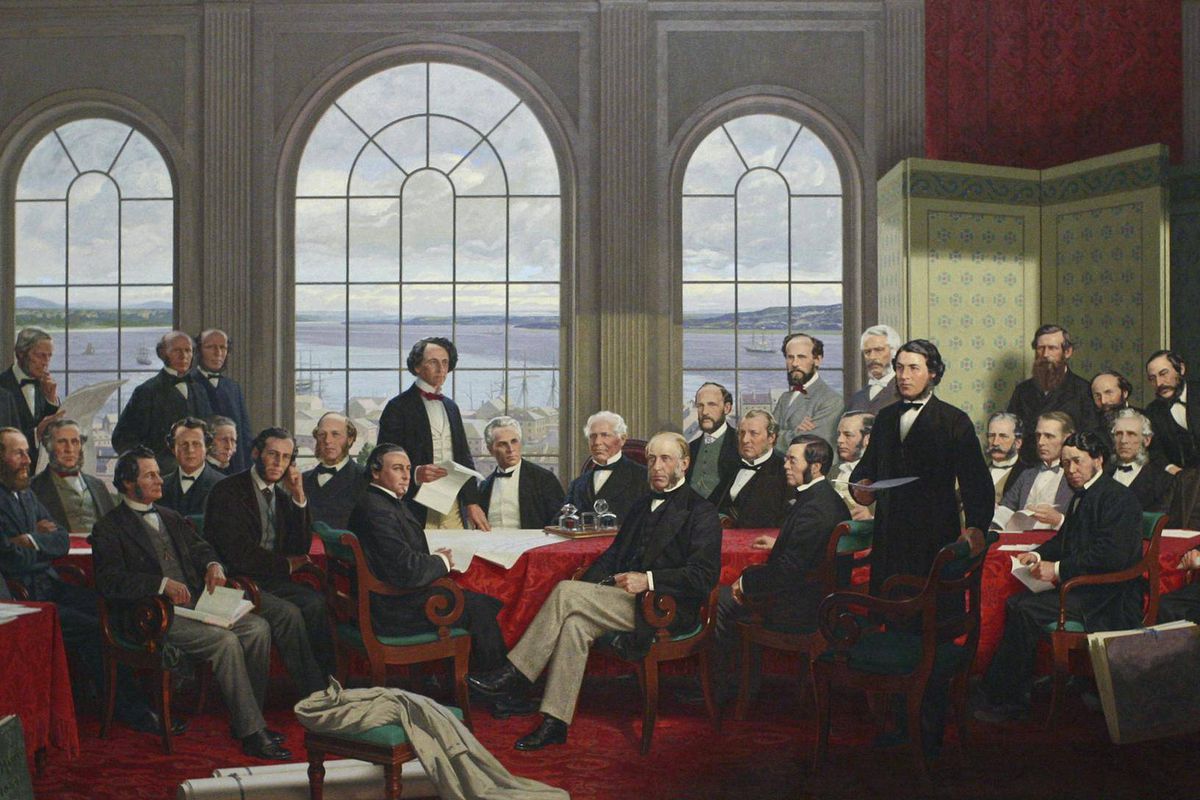
The enactment of the British North America Act - March 1867
Parliament Hill - Ottowa
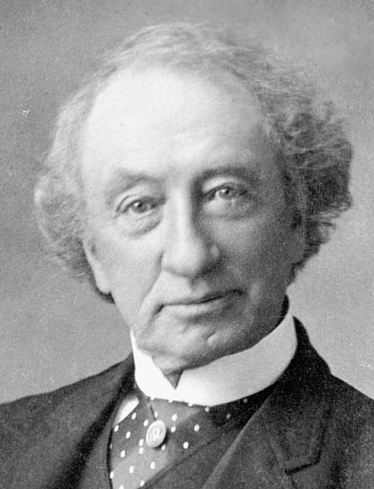
John A Macdonald (Conservative Party) - 1st Canadian Prime Minister (1878-1891)
|
Australia and New Zealand
Originally a British penal colony (early 1800s), Australia began to
receive immigrants on their own initiative, especially after gold was
discovered there in 1851. Huge numbers not only of English but also
Chinese were brought in to work the gold fields (causing considerable
English-Chinese racial conflict at the gold fields).
Soon Australia had settled six
different states, each with its own British-styled government.
But federation on the Canadian model did not move forward as quickly as
it had in Canada, and it was not until the end of the 1800s that work
got seriously underway on the project, resulting finally in 1900 in the
Australian Commonwealth Act. But in Australia the model followed
was not the British parliamentary model, but a federal system closer to
the one in the United States, with much autonomy accorded the
individual states.
New Zealand was asked to become part of the Australian venture but
declined to do so, preferring to maintain its own "national" identity.
In 1867, at the same time that Canada was set up as a British dominion,
New Zealand was accorded self-government. Finally in 1907, it was
accorded dominion status as distinct nation.
|
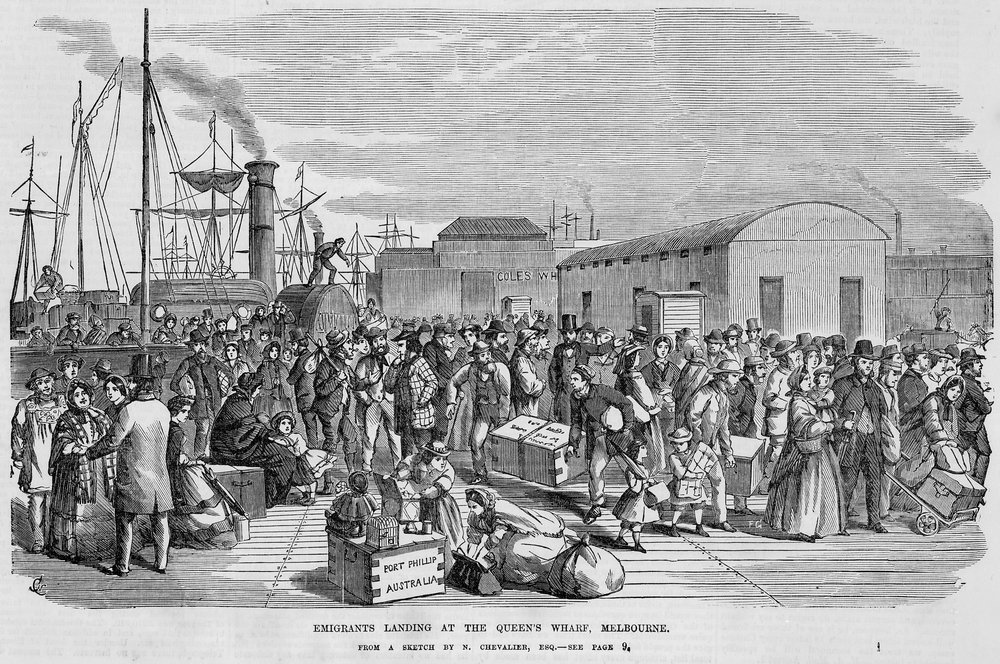
Arrivals to Australia - 1850s
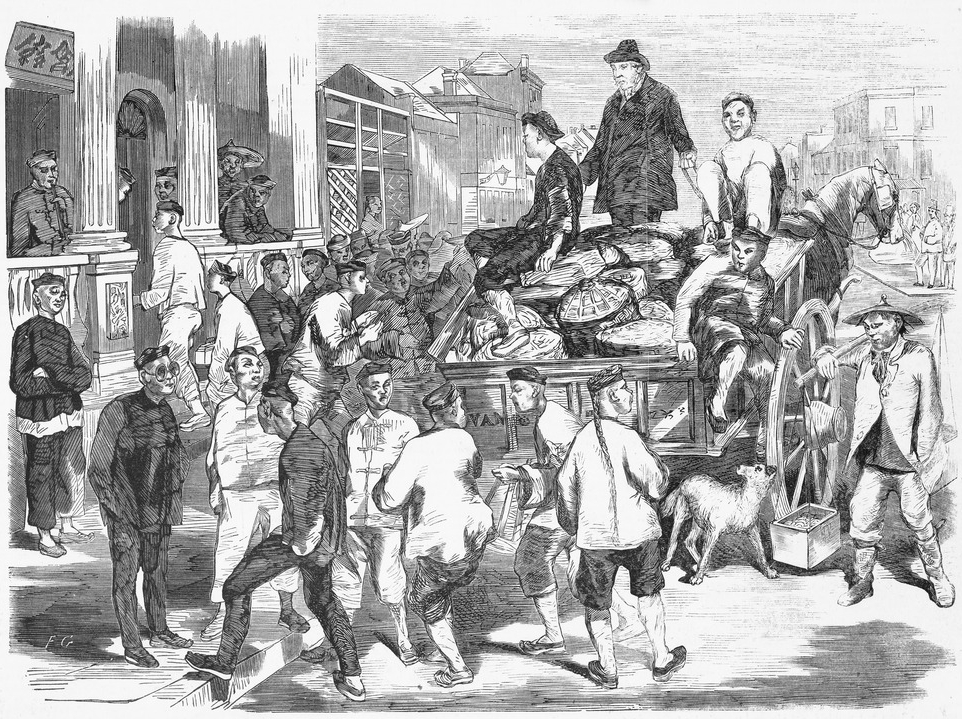
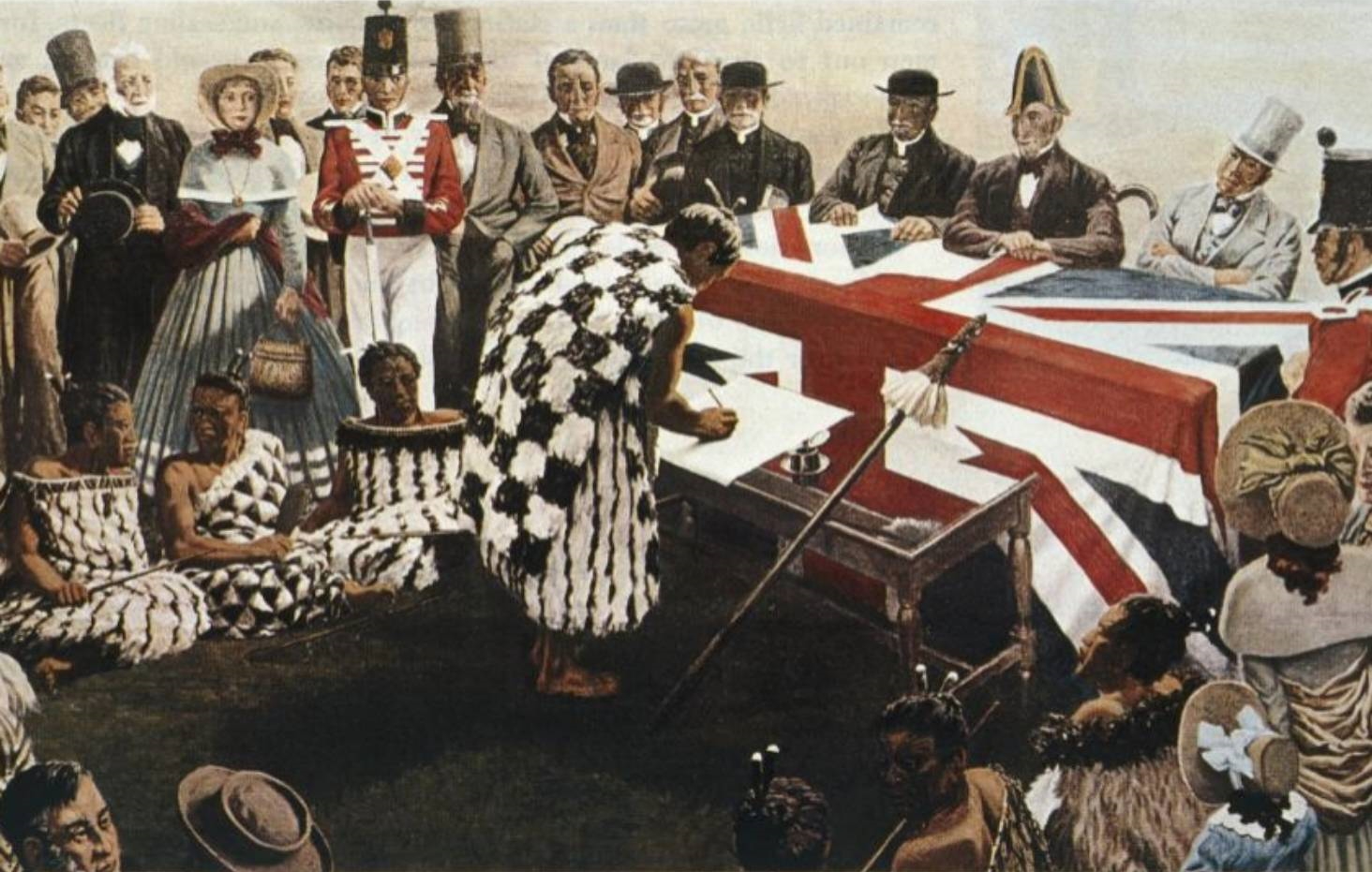
Treaty of Waitangi in 1840 bringing Maori New Zealand into the British domain
|
The Dutch Cape colony
We
have already mentioned how, in the mid-1600s, the Dutch established a
colony at the Cape of South Africa, and then expanded that settlement
into the South African interior ... then when, in 1779, the Dutch met
the first Xhosa tribesmen at the Great Fish River, dividing Western and
Eastern South Africa. Here they fought each other to a
standstill, making it the eastern boundary of the Cape colony and a
western boundary for the Bantu tribesmen.
The British takeover
During the Napoleonic wars the British seized the strategic Cape Colony
from the Dutch ... and had their ownership confirmed at the Congress of
Vienna in agreeing to pay the Dutch 6 million pounds for the
colony. But their English-only language policy plus their
abolition of slavery in 1834 upset the Dutch inhabitants so much that
they began migrating away from the Cape deeper into the African
interior.
|
|
The Zulu and the Boer Voortrekkers
At the same time an African chieftain, Shaka, had forged a huge Zulu
tribe into a fierce fighting force to the northeast of the Cape colony
(early 1800s). His warring (the Mfecane) was so brutal that he
actually scattered a number of tribes once inhabiting the open
highlands northwest of his new Zululand ... enabling the Dutch farmers
("Boers") to move themselves easily into the now relatively uninhabited
highland region or upper Veld during the "Great Trek" away from the
English-controlled Cape. Beginning in 1835, some ten thousand voortrekkers ("advancing migrants" or frontiersmen) would make the journey,
eventually establishing two Boer Republics, the Orange Free State, and,
further to the northeast, the Transvaal.
But entry into Zulu territory (south across the Drakensberg Mountains) was very dangerous ... as the
Voortrekkers were to discover in 1838 ... when a large group of them
(accompanied by other African tribesmen) were slaughtered by the Zulu impi or warriors of Shaka's brother, Dingane (ruled KwaZulu 1828-1840).
|
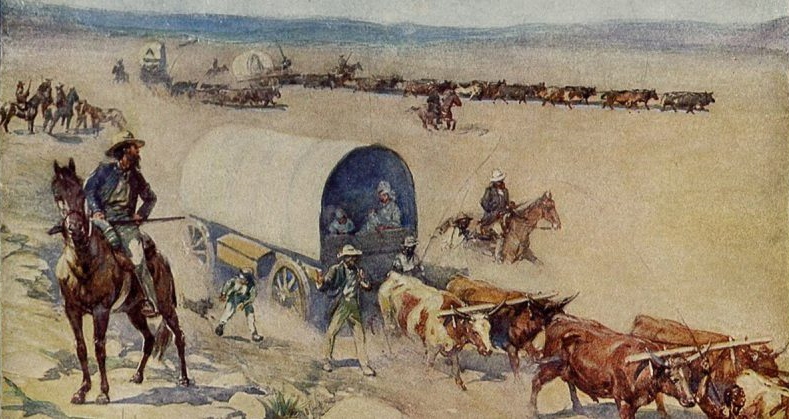
The 1830s Boer Voortrekkers (or Trekboers)
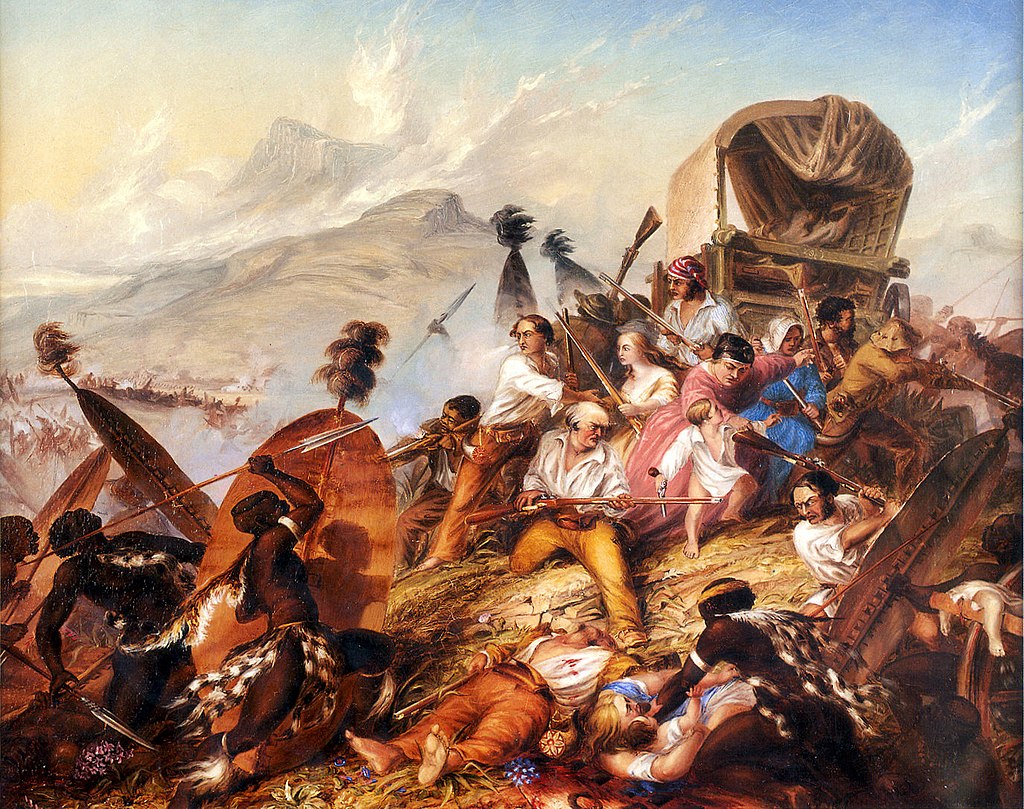
The 1838 slaughter at Weenen by Zulu Chief Dingane's impi of the entire party (500+) of Voortrekkers ... and the Khoikhoi and Basuto tribesmen accompanying them
At the same time the British had begun to move into the region along
the Indian Ocean midway between the Xhosa in the south and the Zulu in
the north. But the Dutch were also migrating into the area and
the two groups fell into fighting in 1842. The Boer voortrekkers
were driven across the Drakensberg mountains to the north ... and
thousands of British were subsequently brought in to settle the new
British province called "Natal."
But with slavery having been
abolished in Britain, the British were eventually forced to turn to
India to find cheap labor for their sugar farms (the Zulu were scornful
of such labor). During the second half of the 1800s over 150
thousand Indians were brought into Natal as indentured workers, making them more numerous
than the Europeans living there.
The British began to think about creating a southern African federation
similar to the one established in Canada. The hope was to bring
the Cape, the Dutch Republics, Natal Province and a number of African
tribal territories together ... something however to which neither the
Boers nor the Zulu were going to be willing to agree. When the
British pressed the issue with the Zulu, war broke out. The
results were extremely bloody for both sides. But in the end Zulu
power was broken.
2"Natal"
is actually the name for that coastal region assigned by the Portuguese
explorer da Gama, when he first sighted it on Christmas Day, 1497.
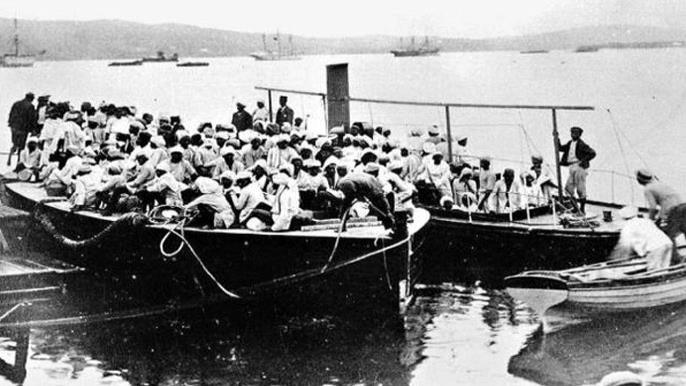
Indian Indentured Workers shipped to Natal - 1860s
|
The Boer War
But the Boers would be no less resistant to the idea of a British
federation or union. When in 1867 diamonds were discovered in the
Orange Free State, imperial ambitions of the English at the Cape were
ignited. Stoking the fires of English ambition was Cecil Rhodes,
who from 1871 to 1888 worked his way from diamond digger to fabulously
wealthy diamond monopolist. He then moved into South African
politics, which he likewise came to dominate, becoming prime minister
of the Cape Colony in 1890.
In the meantime, gold had been
discovered in the Transvaal in 1885. But this time the Boers were more
resistant to the efforts of the English to exploit the gold, which laid
well below the surface. Boers were not interested enough in going
down into the mines, and in an effort to secure the necessary labor to
work the gold mines Europeans (principally British) were brought into
Transvaal, much to the displeasure of the Boers who sensed that they
were losing political ground to these uitlanders (foreigners) and did
what they could to bring this immigration to a halt.
But Rhodes
was not one to be easily dismissed, and plotted a takeover of the
Transvaal government by the uitlanders with a raid on Johannesburg by
his friend Dr. Jameson and 500 men ... which ended up disastrously for
the English. Now feelings ran hot.
The British colonial
secretary Chamberlain demanded full rights for the uitlanders and
Transvaal president Kruger answered back with a call for war if the
British did not remove their troops from the Transvaal border.
The British refused and war was declared (October 1899) by Kruger.
The world watched closely as the war unfolded between the superpower
Great Britain and the little but defiant Boer Republics. The
British regular armies under Lord Kitchener found the guerrilla tactics
of the Boer commandos difficult to counter (shades of the American
Revolution!) and began a shameless scorched earth policy ... plus the
confinement of Boer families in "concentration camps" in which Boer
women and children died in massive numbers from hunger and disease.
Much
to the shock of the British, who thought that this war would be won
quickly and easily, this gruesome war dragged on and on. This in
turn generated a growing anti-war opinion in Britain ... and a rising
European scorn for Britain's shameful behavior.
Finally however, in May of 1902 the Boers accepted surrender ... and
the incorporation of the Orange Free State and the Transvaal within a
new South African Union. But this was accompanied by the British
promise also of South African self-government – with dominion status –
in the near future (actually fulfilled in 1910).
Ultimately, the war had proven very costly in lives and expenditures
... gaining little for the British victors in the process – except a
tarnishing of the British image as "enlightened" empire-builders.
|
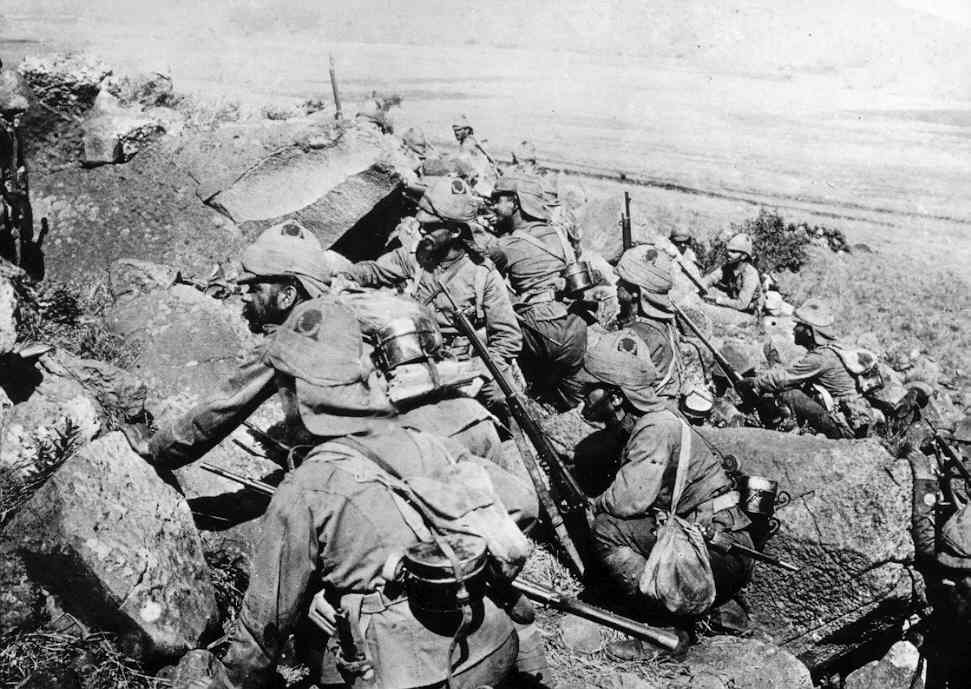
British infantry (some of
the quarter million troops sent to South Africa to crush Boer independence)
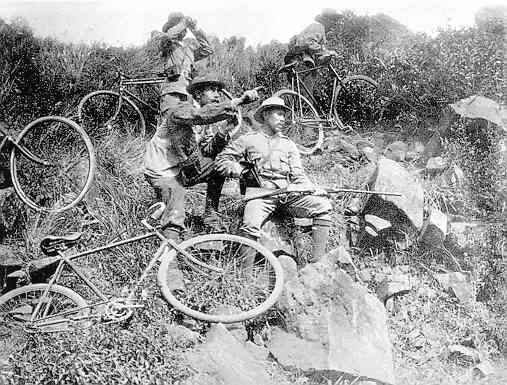 Boer infantry on
bicycles
Boer infantry on
bicycles
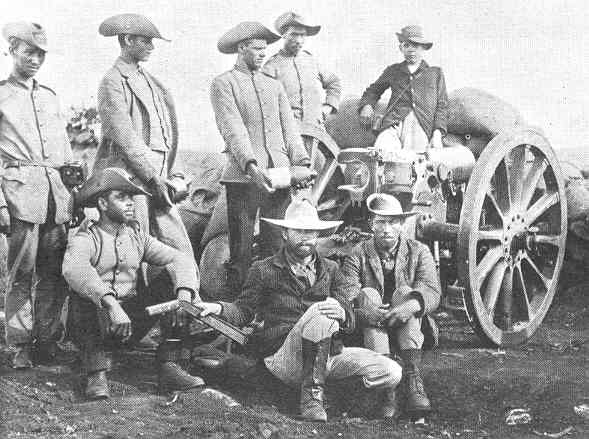 Boer commandos
Boer commandos
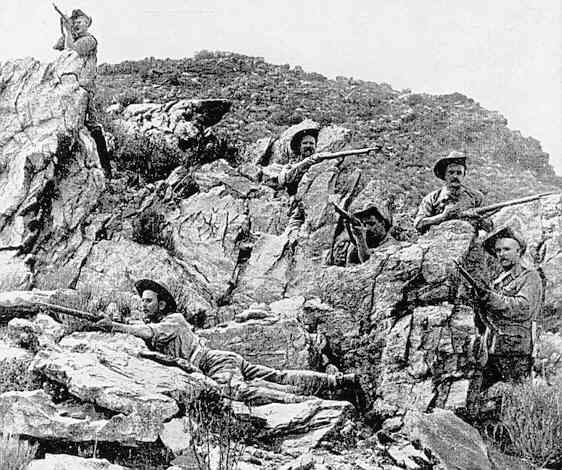
British troops hoping to
ambush Boer patrols
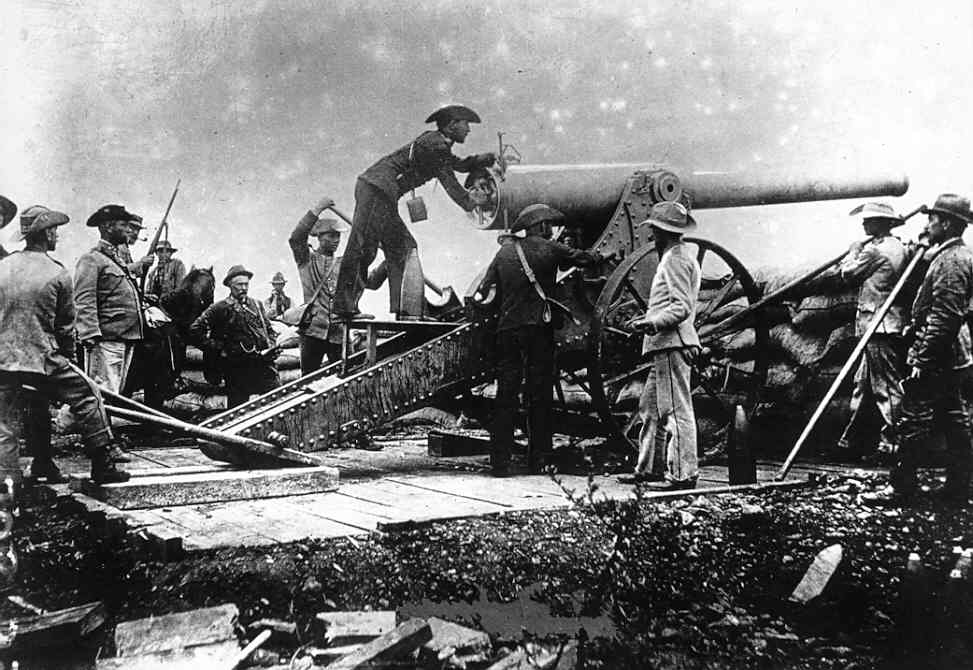
Boer artillery
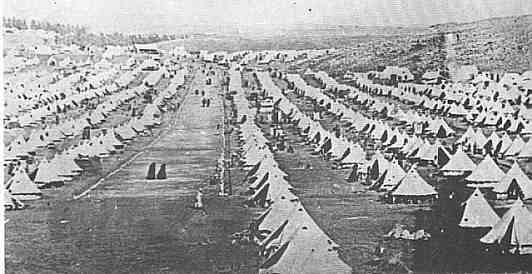 A British concentration camp during the Boer War
A British concentration camp during the Boer War
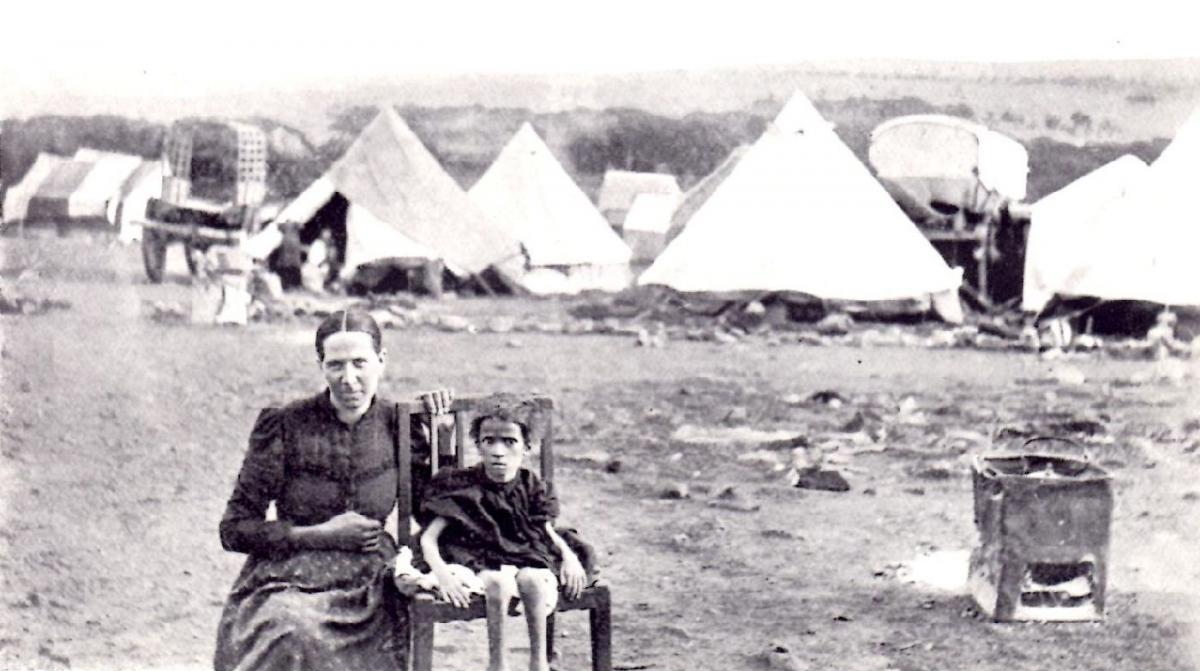
Boer life in a British concentration camp
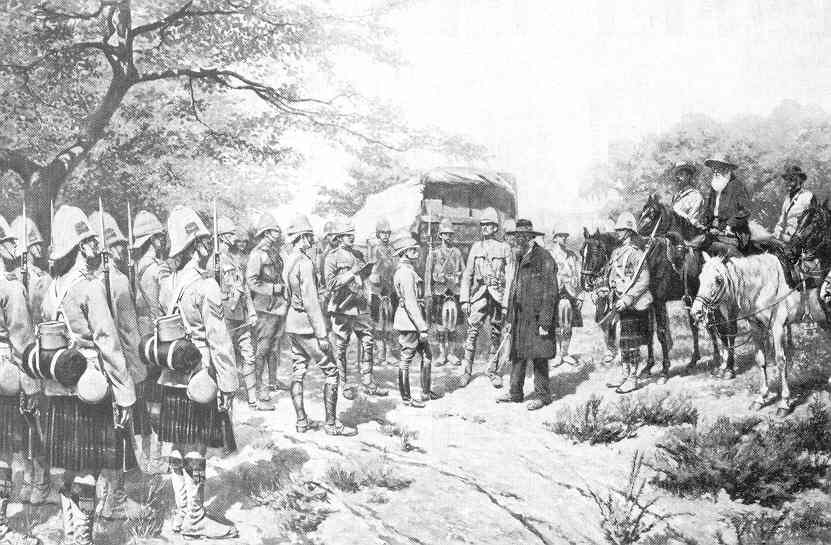 Boer General Cronje's surrender
to the British
Boer General Cronje's surrender
to the British
THE EARLY STAGES OF FRENCH IMPERIALISM |
|
Algeria
One of the most extensive moves by the French to extend and incorporate
overseas territories into the growing French Empire was directly across
the Mediterranean from Southern France: Algeria. In 1827
French Bourbon king Charles X turned a minor incident involving the dey
of Algiers into an excuse for a blockade of the port of Algiers ...
which step by step escalated into all-out war between France and
Algiers in 1830. A French army of 34,000 troops invaded Algiers
and fairly quickly defeated the dey’s army ... and proceeded to commit
numerous atrocities against the civilian population afterwards.
Then in the midst of the action Charles was deposed and Louis Philippe
took his place as French king ... but continued the action in North
Africa, extending the war to Oran and Constantine (comprising today’s
Algerian coastlands) by 1847. Conquest was soon followed up by
the annexing of the Algerian territories as part of a reviving French
empire.
Also, a large number of French (and other Europeans)
began to settle the fertile lands of Algeria, for the purpose of cotton
farming (subsequently wine production). By 1860 European
immigrants to Algeria numbered around 200 thousand. So alarmed
were the Algerian Arabs that in 1864 a massive uprising of the Arabs
against their French occupiers occurred ... requiring a huge French
army and a full year of action to break the power of the
rebellion. Napoleon III, attempting to appease the Arab
population, promised a number of social and political reforms ... but
found his plans upset by a whole range of disasters which hit Algeria
(locusts, drought, famines, and disease), plus the resistance of the
French colonists opposed to his reforms.
Nonetheless, Algeria began to develop a distinct French-Arab culture of
its own out of these tensions. But the plan now was to integrate
Algeria fully into French national territory as one of France’s
departments ... that is, Algeria would no longer be seen as a French
colony, but instead would be considered to be an integral part of
France itself (like Alaska and Hawaii would become to America).
|
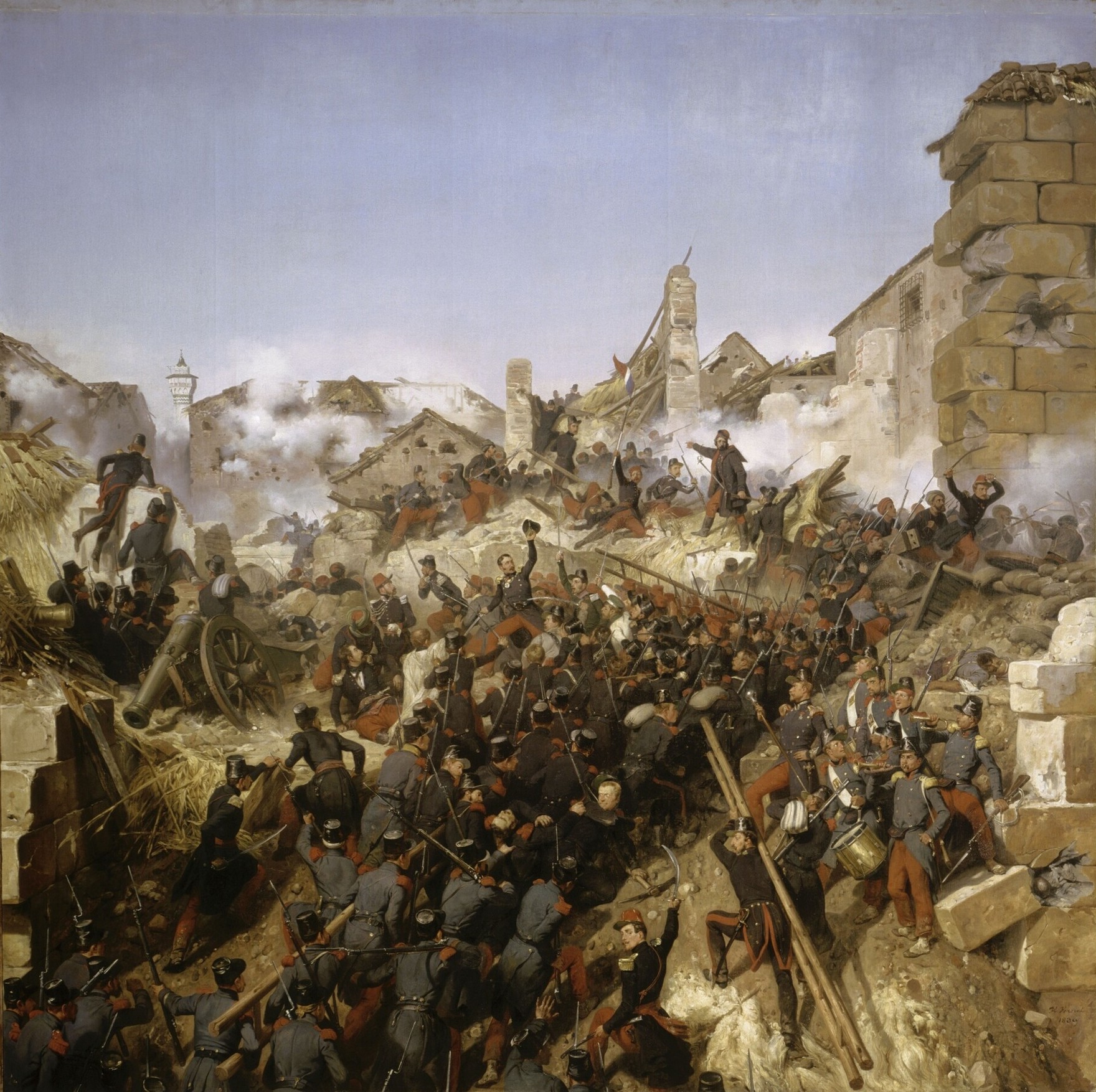
The French take the Algerian citadel at Constantine - 1837 - by Horace Vernet (1838)
Palace of Versailles
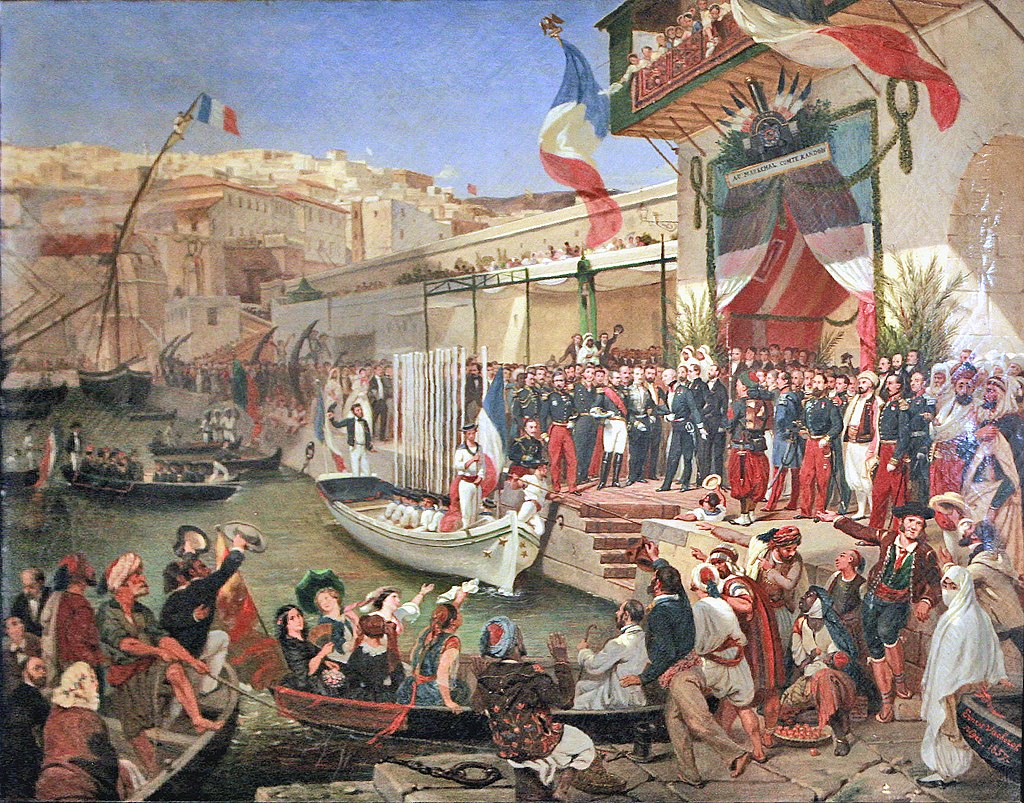
The arrival of Marshal Randon in Algiers in 1857 - by Ernest Francis Vacherot
|
New Caledonia
One of the more interesting pieces in France’s imperial puzzle was New
Caledonia (in the South Pacific just east of Australia and north of New
Zealand), which was turned into a penal colony during the second half
of the 1800s, receiving 22,000 criminals during that time.
Eventually other French would join them looking to start a new life in
this distant colony.
|
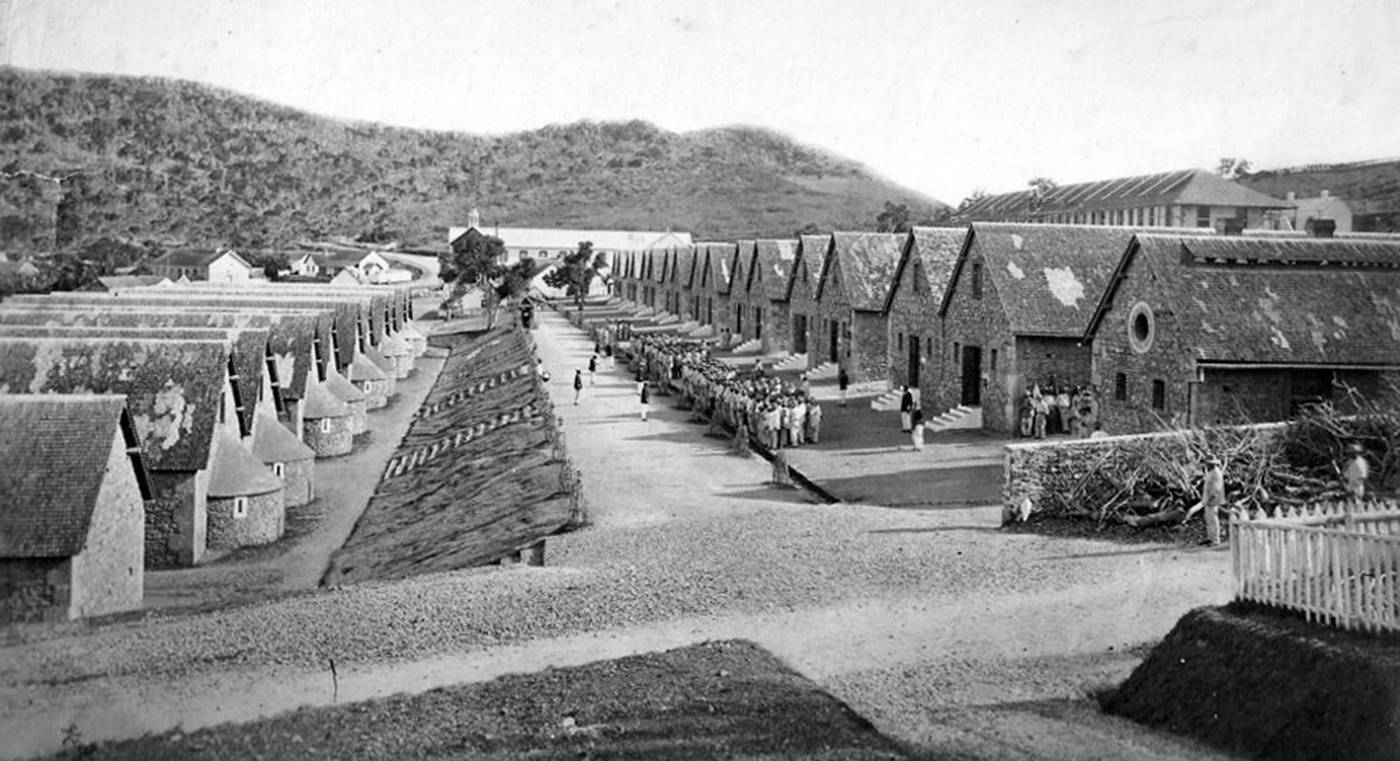
French penal housing in New Caledonia
|
Senegal
Senegal in West Africa became a key French holding in Africa during the
same period. From its capital at Dakar the French African colony
was extended into the African interior, posing itself as a French model
of modern social, economic and cultural development. In this it
was a key piece in its "civilizing mission" (la mission civilisatrice) which provided moral justification for a rising sense in France of the necessity of French imperialism.
|
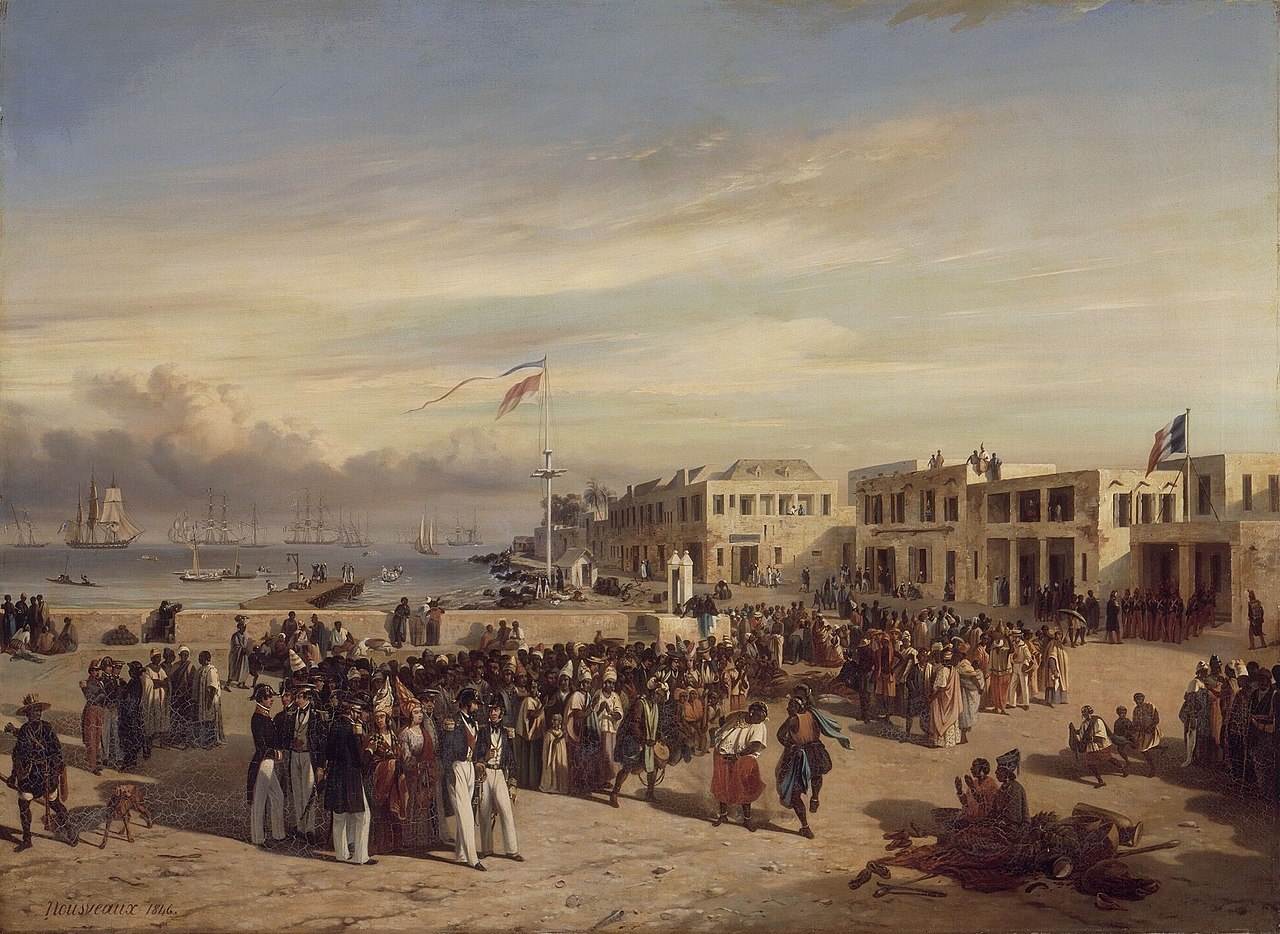
The French trading post on the island of Gorée, just offshore of Senegal
|
Napoleon III’s blunder in Mexico: "Emperor" Maximillian
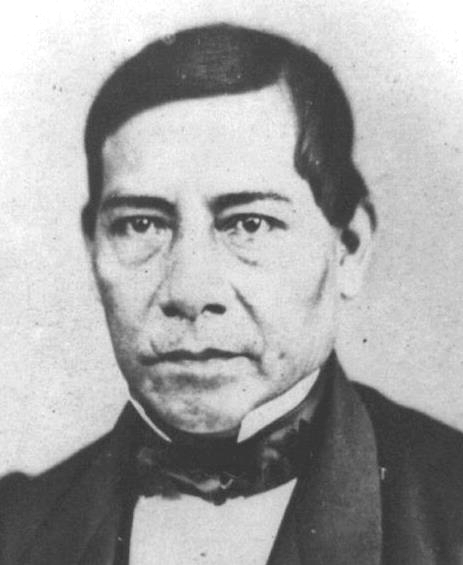 In 1861, with the United States deeply involved in its own civil war
between the North and the South, Napoleon (along with some support from
Great Britain and Spain) decided to invade and seize the government of
Mexico ... using the excuse of Mexican President Benito Juarez’s suspension of
interest payments to European creditors. But once it became clear
to his British and Spanish allies that Napoleon’s intentions were fully
imperialistic and not just debt-collection, they withdrew from the
project.
In 1861, with the United States deeply involved in its own civil war
between the North and the South, Napoleon (along with some support from
Great Britain and Spain) decided to invade and seize the government of
Mexico ... using the excuse of Mexican President Benito Juarez’s suspension of
interest payments to European creditors. But once it became clear
to his British and Spanish allies that Napoleon’s intentions were fully
imperialistic and not just debt-collection, they withdrew from the
project.
Initially the Mexicans were able to defeat a French army
on May 5th 1862 (thus the Cinco de Mayo Mexican national
holiday!). But Napoleon brought in more French troops (including
the troops of the famous French Foreign Legion) and finally was able to
seize Mexico City the next year in June. Juarez and some of his
men escaped to Chihuahua, where they continued to operate guerrilla
style from there.
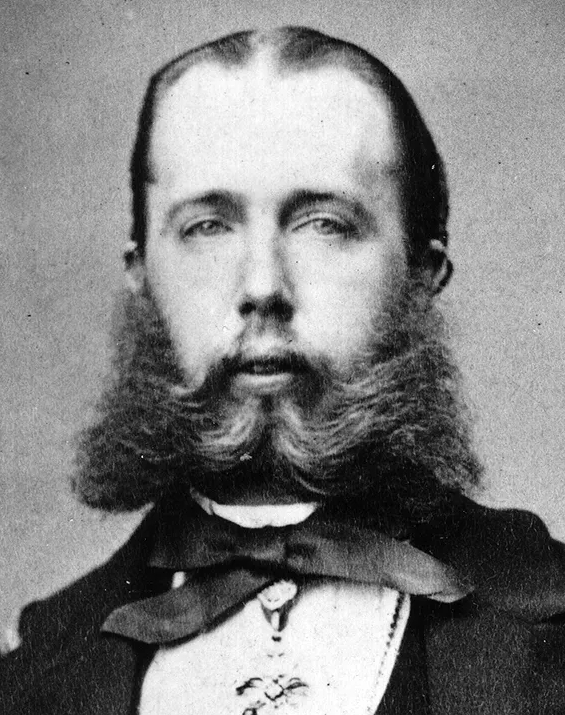 But with Juarez gone from the capital, a
conservative military junta (military council) was set up and, under
orders from Napoleon, called on Maximilian of Habsburg (the younger
brother of the Austrian Emperor Franz Joseph I) to rule Mexico as its
new emperor. Early the following year (1864) the French brought
Maximilian to Mexico to be crowned Mexican Emperor. But with Juarez gone from the capital, a
conservative military junta (military council) was set up and, under
orders from Napoleon, called on Maximilian of Habsburg (the younger
brother of the Austrian Emperor Franz Joseph I) to rule Mexico as its
new emperor. Early the following year (1864) the French brought
Maximilian to Mexico to be crowned Mexican Emperor.
France now had a puppet emperor that not only gave the French access to
Mexico’s mineral wealth, it served as a seal on a new French-Austrian
friendship ... that both monarchies sensed they needed to
counterbalance Prussia’s rapid rise to power in Germany. It also
put in Mexico a Catholic counterpart to the strong American
Protestantism to the north in the United States.
Maximilian tried to win Mexican hearts with rather liberal ideas for an
emperor ... merely alienating in the process the conservative Mexicans
who had been co-sponsors with France in this whole venture. In
the meantime Mexican Republicans under Juarez had been gathering
strength ... and the following year (1865) were able to gain important
victories in battles against Maximilian’s forces (despite even his
French help). At this point Maximilian took on a more brutal
stand in his dealing with the Republicans.
Now with its civil war brought to an end in mid-1865, the United States
moved to become more directly involved. American funding and arms
began to pour in to support Juarez and his Republican forces.
Then in 1866 Napoleon, now preferring good relations with the United
States rather than with the Maximilian government, began to withdraw
its military support of Maximilian ... opening the way for the
Republicans to begin to advance on the Mexican capital taking city by
city as they went. By early 1867 Maximilian was forced to flee
the capital, then tried to escape Mexico ... getting caught along the
way. He was tried and sentenced to death ... causing European
heads of state to plead for his release. But Juarez wanted the
Europeans to get the message that there was to be no more such meddling
in Mexican affairs. In June of 1867 Maximilian and two of his generals
were executed by a firing squad.
The net effect of this episode was that Napoleon lost more credibility
at a time when he could ill afford it, Mexican conservatives were
discredited, Juarez once again (the man never seemed to go away)
overstayed his welcome among the Mexican people, but died in 1872
amidst another rebellion against his heavy-handed rule ... and life
went on as before in Mexico. |
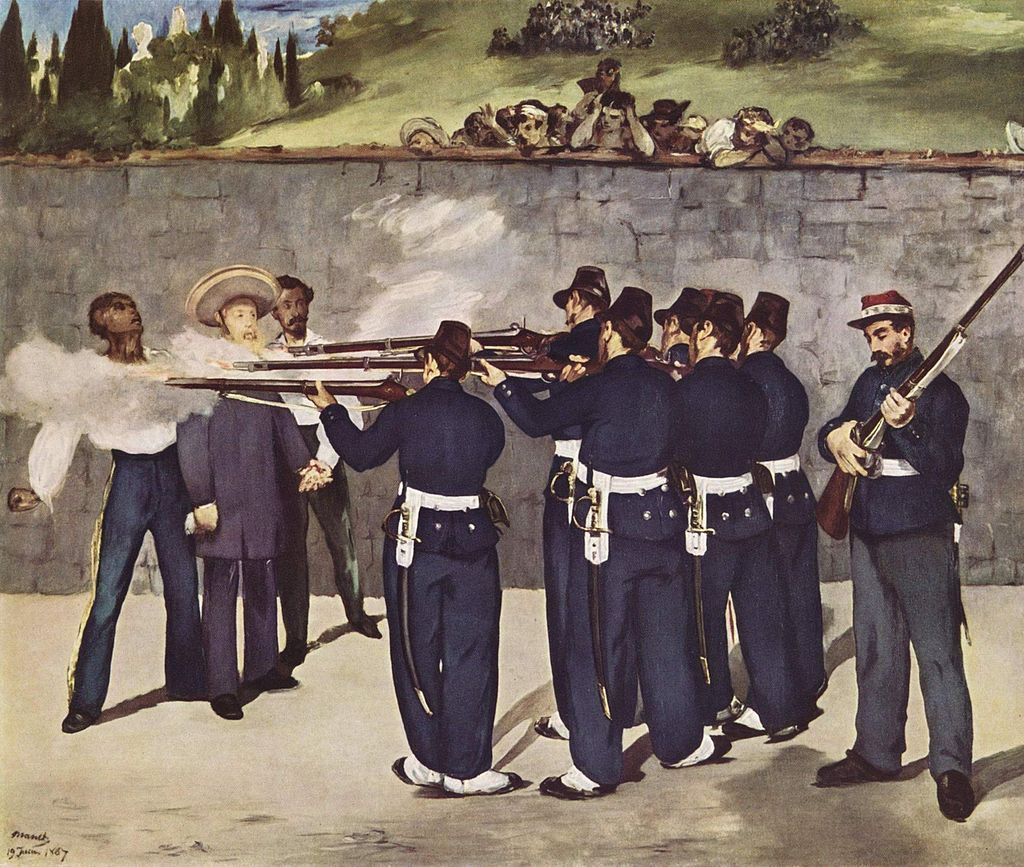
June 1867 - Maximilian and two officers shot by a firing squad - Edouard Manet (1868)
Kunsthalle - Mannheim
AMERICA JOINS THE IMPERIALIST GAME |

Admiral Alfred Thayer Mahan
- advocate of the full pursuit of sea power by America
Library of Congress
(LC-USZ62-22488)

Senator Albert Beveridge
(Indiana) - advocate of American imperialism at the end of the 1800s
Library of Congress
(LC-USZ62-61459)

President William McKinley
(President 1897-1901)
Library of Congress

William Jennings Bryan -
Democratic opponent to McKinley in 1896)
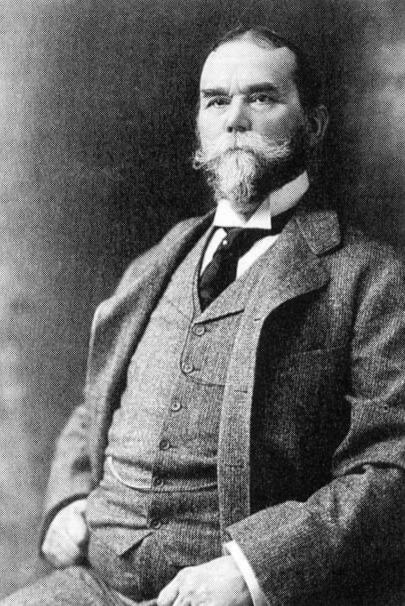
John Hay - McKinley and Roosevelt's
Secretary of State.
He was a strong advocate
of the Open Door Policy in China and the building of the Panama Canal
The Spanish-American War - 1898-1899
The pretext: supporting
the independence of Spanish colonies in the Caribbean and the Pacific

Spanish firing squad (Alphonso
Guards) preparing to execute Cuban rebels
National Archives
(NA-111-SC-94538)

Cuban rebels about to be
executed by the Alphonso Guards
National Archives
(NA-111-SC-113614)
 Spanish execution chamber
- Manila
Spanish execution chamber
- Manila
The excuse: The unexplained
explosion of the Battleship Maine in Havana Harbor
 The U.S.S. Maine entering
Havana harbor - January 1898
The U.S.S. Maine entering
Havana harbor - January 1898
National Archives
 California troops ready to
leave for Manila - 1898
California troops ready to
leave for Manila - 1898

Teddy Roosevelt and the Rough
Riders - July 1898
Library of Congress

Theodore Roosevelt (front
- 3rd from right) and the Rough Riders
Hawaii
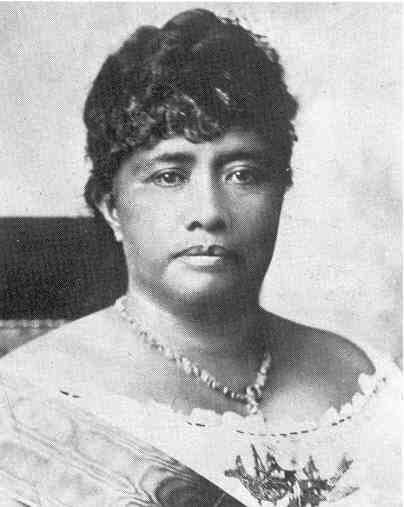 Hawaiian Queen
Liliuokalani Hawaiian Queen
Liliuokalani
(younger and older)
Library
of Congress
Panama ... and the Canal
 Digging the Panama Canal
- 1904-1914
Digging the Panama Canal
- 1904-1914

Digging the Panama Canal
- 1910
 The Culebra Cut in the Panama
Canal.
The Culebra Cut in the Panama
Canal.

Mammoth Locks being built
at the Panama Canal - 1912
Haiti
 U.S. marines landing artillery
in Haiti - 1915
U.S. marines landing artillery
in Haiti - 1915
 The body of Haitian rebel
leader Charlemagne Massena Peralte - killed by US-led gendarmes
The body of Haitian rebel
leader Charlemagne Massena Peralte - killed by US-led gendarmes
National Archives
Involvement in the Mexican Revolution
 Mexican President Francisco
Madero
Mexican President Francisco
Madero
The first democratically
elected leader (1911) in Mexico's history. He is announcing a plan
to transfer the wealth of Mexico from the wealthy aristocrats
and foreigners to the Mexican people themselves
Library of Congress
LCUSZ62-44272
 General Victoriano Huerta
(center) in early 1913 overthrew the Madero government
(murdering Madero in the process).
General Victoriano Huerta
(center) in early 1913 overthrew the Madero government
(murdering Madero in the process).
Augustin Victor Casasola
/ Casasola Archive, Instituto Nacional de Antropologia e Historia, Mexico
City
|
Behind the plot was the U.S.
Ambassador Henry Lane Wilson, representing the interests of the aristocrats
and foreigners
who traditionally had run
the country. (America business interest controlled 43 per cent of
the country's wealth - notably
nearly all the mines and
smelters and two-thirds of the railroads; other foreign interests - notably
British and German -
controlled another 25 per
cent; and the remaining wealth was controlled by one per cent of the Mexican
population).
|
 Henry Lane Wilson,
U.S. ambassador to Mexico
Henry Lane Wilson,
U.S. ambassador to Mexico
 Wilson's Secretary of State,
William Jennings Bryan (and bodyguard)
Wilson's Secretary of State,
William Jennings Bryan (and bodyguard)
Harry Ransom Research Center,
The University of Texas at Austin
| Bryan supported Wilson's idea of
forcing the Mexican dictator Huerta out of office (an expeditionary force
of 4000 U.S. troops landed at Vera Cruz in 1914); a year later when ranking
members of the U.S. State Department plotted to overthrow the new Carranza
government and put Huerta back into office, Bryan moved to bloc the plot.
Huerta was seized at the Mexican border and imprisoned in Texas. | |

"Gen. Villa, Mexican
bandit"
"1.Gen Fierro. 2.Gen. Villa.
3.Gen. Orgtega. 4.Col. Medina." - ca. 1913. - W.H. Horne Co
National Archives

Pancho Villa and his rebel
army on a raid along US-Mexican border - 1916
Library of Congress LC
USZ62-29357
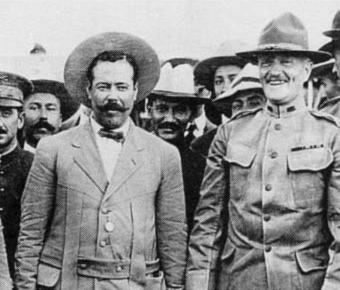 Pancho Villa and US General
John Pershing in happier days - 1914
Pancho Villa and US General
John Pershing in happier days - 1914

Headquarters of the
American forces in Colonia Dublan, Mexico. General Pershing with his
aide Lt. Collins - 1916 - photo by William Fox.
National Archives
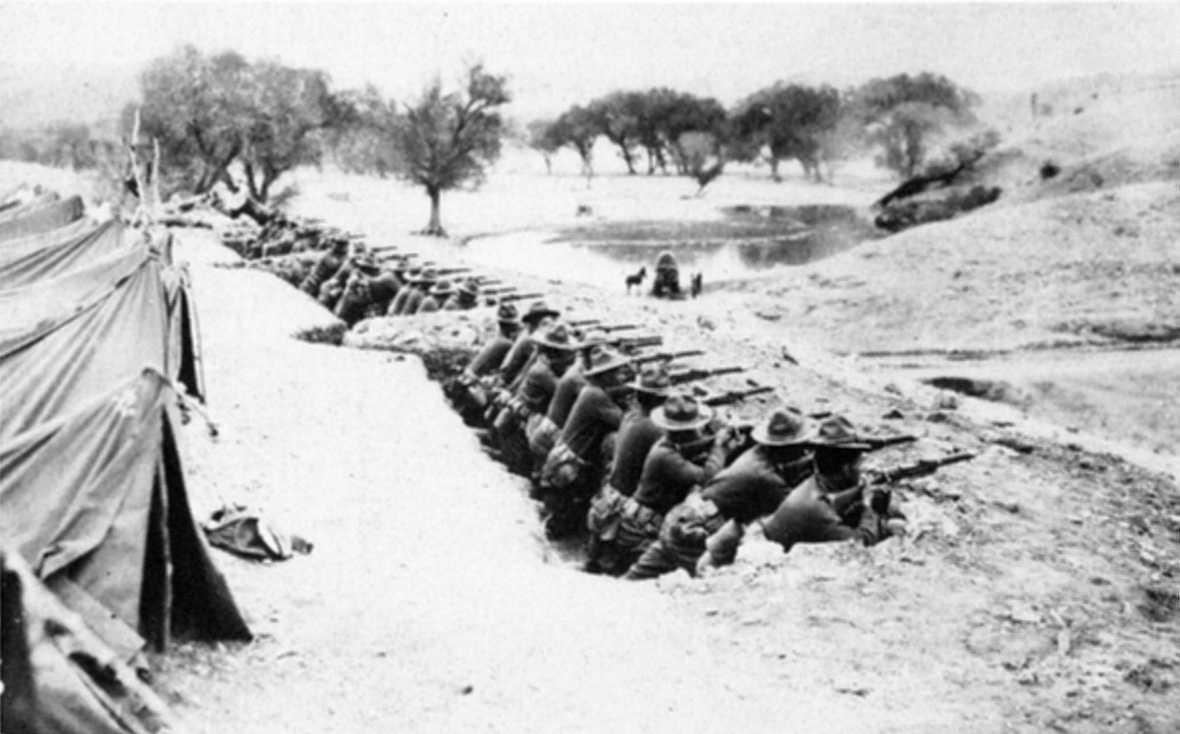
"En route with the American
Field Headquarters from El Valle to Las Cruces, Mexico, April 10,1916. Company A,
6th Infantry, in emergency trench which has been prepared at its camp for Attack by
Mexicans." - photo by William Fox.
National Archives

"A triple execution at Juarez,
Mexico, about the time of the Columbus affair" - ca. 1916. Photo by W.H. Horne Co.
National Archives

Emiliano Zapata - rebel leader
who took on the wealthy landed gentry of Mexico
WESTERN IMPERIALISM IN CHINA AND EAST ASIA |
|
The First Opium War (1839-1842)
Europeans had long had an interest in Chinese goods – silks, tea,
porcelain – but had little to sell of serious interest to the Chinese
... until the British East India Company began exporting Indian opium
to China, creating an ever-expanding market for their product among a
rapidly growing number of Chinese addicts. When in 1839 the
Chinese emperor seized a huge amount of this product (over a thousand
tons) in an effort to shut down this ruinous commerce, the British
struck back and by mid-1842 succeeded in overrunning a number of key
Chinese ports, forcing the Qing (or Manchu) Emperor to grant (Treaty of
Nanking) the British free trading rights in five Chinese ports, the
transfer of Hong Kong Island to the British ... and the rights of
Christian missionaries to enter China freely.
|
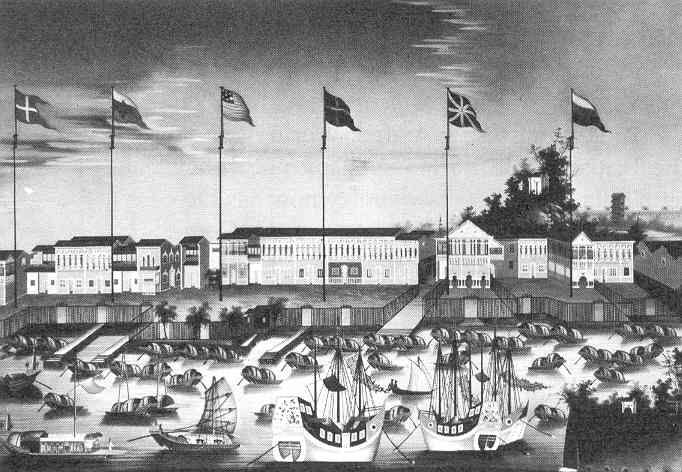 Chinese painting of the European
quarters of the port of Canton
Chinese painting of the European
quarters of the port of Canton
Peabody Museum of
Salem
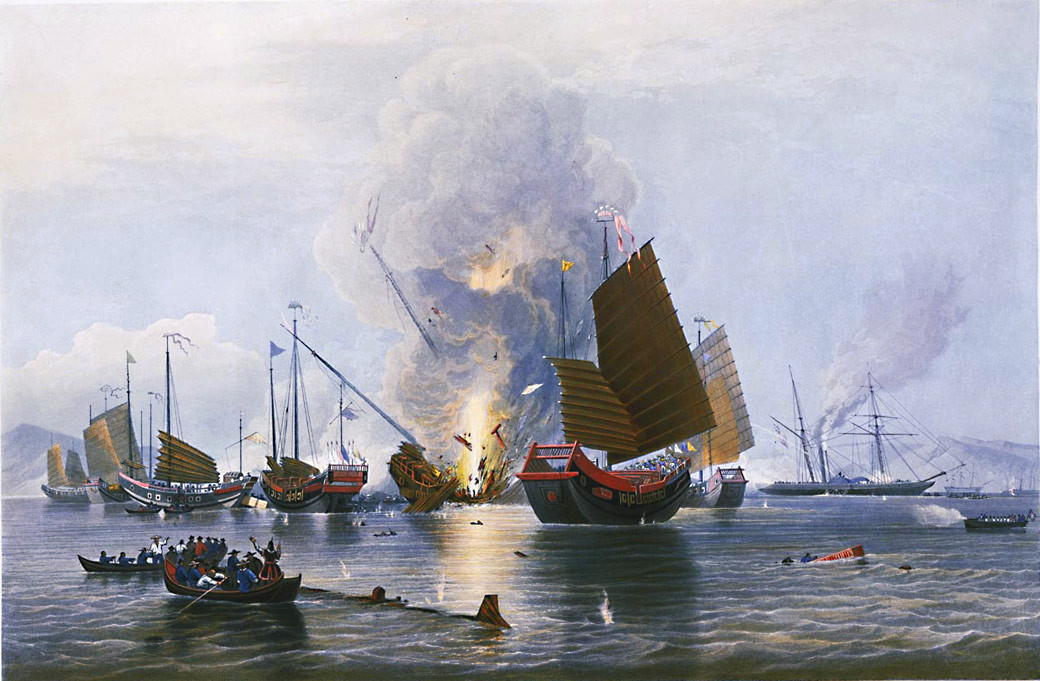
British ships destroying the Chinese naval defense fleet - 1843
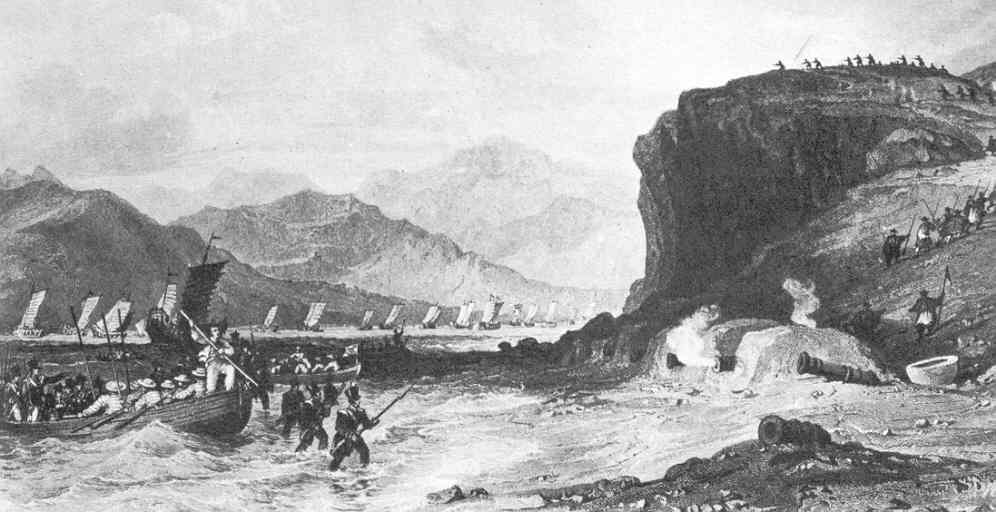
The Opium War waged by the
Chinese Emperor and his forces who were attempting to block
the British sale of Opium to China
Brown Brothers
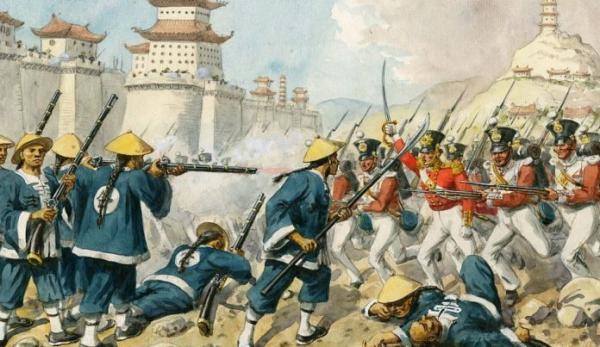 First Opium War - 1841
First Opium War - 1841
|
The opening of Japan (1853-1854)
Meanwhile
in nearby Japan, American naval commodore Perry and four ships under
his command pushed their way into Tokyo harbor in 1853 ...
then returned the next year with an ultimatum demanding the opening of
relations with America. After considering the unreadiness of the
Japanese to fend off the powerful American artillery, the shogunate
(government) accepted the American terms. But this was the signal
to the Shogunate council to undertake their own military modernization
as a counter to this Western intrusion. But these reforms were
opposed by a strong traditionalist element in the council that wanted
the restoration of the emperor to power instead as the answer to the
Western challenge. A number of earthquakes and a tsunami which
destroyed thousands of buildings (in a town where the new American
consul was to take residence) convinced the traditionalists that the
gods were registering their opposition to the modernization of
Japan. The Japanese leadership was thus split on the matter.
|
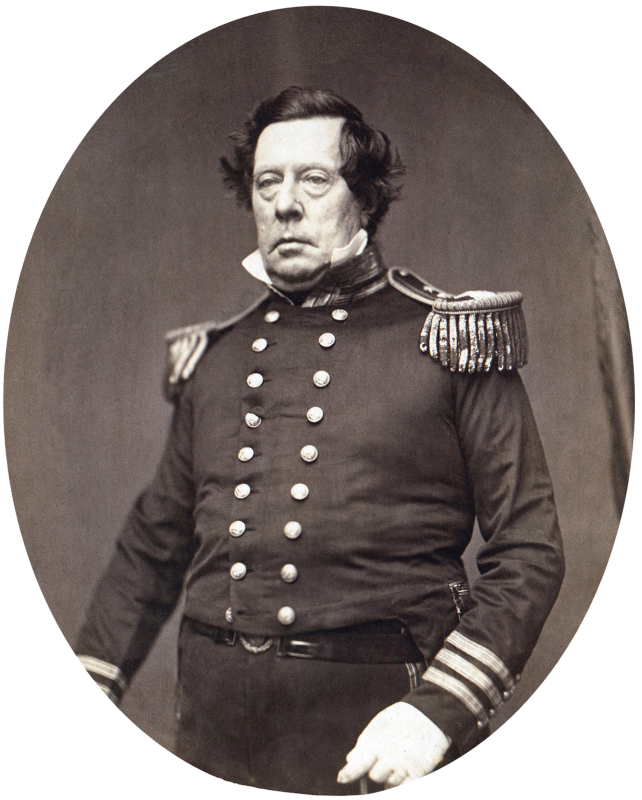
American Commodore Matthew
C. Perry (ca. 1856-58) - photograph by Matthew Brady. Perry forcibly "opened up"
Japan to the West in 1853-1854
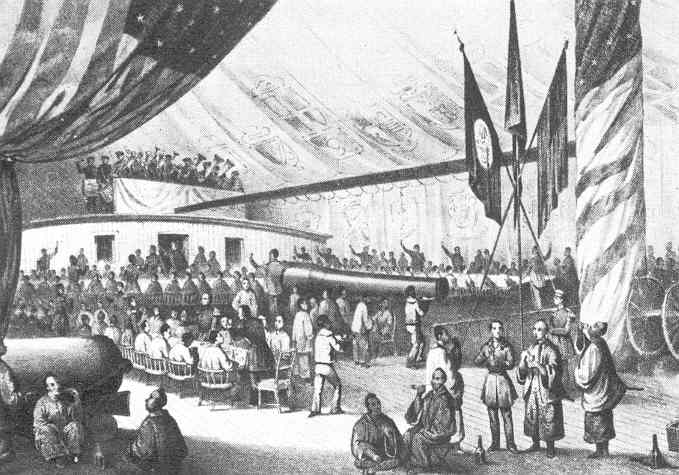 Admiral Perry meeting a Japanese
delegation aboard the Powhattan
Admiral Perry meeting a Japanese
delegation aboard the Powhattan
Wide World Photo
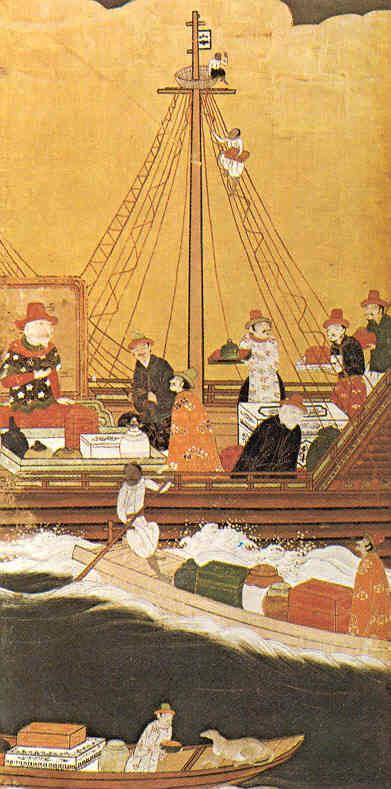 A Japanese panel entitled:
"The arrival of a Western Vessel in Japan"
A Japanese panel entitled:
"The arrival of a Western Vessel in Japan"
Asian Art Museum of San
Francisco - Avery Brundage Collection

Satsuma Samurai of the
Chosyu clan, during the Boshin War period. Hand-coloured albumen silver
print by Felice Beato, 1860s
|
Taiping Rebellion (1850-1864)
and the Second Opium War (1856-1860)
At
this point, the Chinese imperial government was fully absorbed in
trying to suppress a "Taiping Rebellion" ... an uprising started in
1850 by disillusioned Chinese who considered the humiliated Qing
Emperor to have lost the "Mandate of Heaven" and thus needing to be
replaced by new leadership. Rebels led by a quasi-Christian Hong
Xiuquan (considered himself to be the younger brother of Jesus!) had
succeeded in taking control of large parts of China, and for the
longest time the imperial army was unsuccessful in its struggle against
the Taiping rebels who seized a number of key Chinese cities.
Meanwhile, by the mid-1850s there was growing commercial competition
among Western powers to gain an ever-larger position within the Chinese
(mostly opium) market. Americans and French merchant companies
secured trade concessions ... and as the Nanking Treaty was due to be
renewed (after its 12-year term), the British sought to have the
British position expanded. Confusion over a pirated ship (the
Arrow) in 1856 led to fighting between the Chinese and the British ...
which itself became complicated with the Sepoy mutiny in India and the
Crimean War against Russia going on at the same time.
But finally (December of 1857), with the Crimean War and the Sepoy
mutiny out of the way as issues, the British (and the French) were
ready to attack the Chinese at Canton. With the Emperor Wenzong
deeply distracted with the Taiping Rebellion, Canton was easily
captured at the beginning of January of the following year (1858).
Then at this point the new round in the Opium War widened as America
and Russia joined the British and the French ... finally forcing the
Emperor to grant new treaties (June 1858) recognizing a much-expanded
position of the four Western powers in China. The Western powers
now ranged more widely around the Chinese coast, attacking and moving
inland up Chinese rivers ... but got stopped at the Taku forts outside
of the Chinese capital of Beijing. Finally in 1860, they were
able to bring down this piece of the Chinese resistance. In September,
their forces were able to enter the capital itself ... and then proceed
to destroy the palaces of the emperor’s Forbidden City.
The result was that the British, French – and Russians – took control
of major strategic locations in and around China (the British receiving
Kowloon Peninsula opposite Hong Kong, instance, and the Russians
receiving vast amounts of Chinese territory in the Chinese north) ...
and forced the emperor not only to pay them a huge indemnity but also
to allow the opium trade to operate legally in China.
At about the same time however a powerful local leader, Zeng Guofan,
stepped forward with his Xiang Army to attack the Taiping.
Finally after much bloodshed, in July of 1864 Zeng overran the Taiping
position at Nanjing ... but only after the death of the Taiping leader
Hong in June. Remnants of the Taiping fled to the mountains to
continue their efforts. But by and large the rebellion was over.
Zeng and his officers were celebrated widely as the saviors of the Qing
dynasty. But this pointed importantly to the fact that the
emperor was increasingly dependent on his subjects and their leaders to
preserve his throne. In a sense the imperial government was
giving way to increasing governance nationally and locally by a rising
class of local warlords. This did not speak well for imperial
China ... being a sign understood by all Chinese confirming the fact
that the emperor was losing the Mandate of Heaven.
|
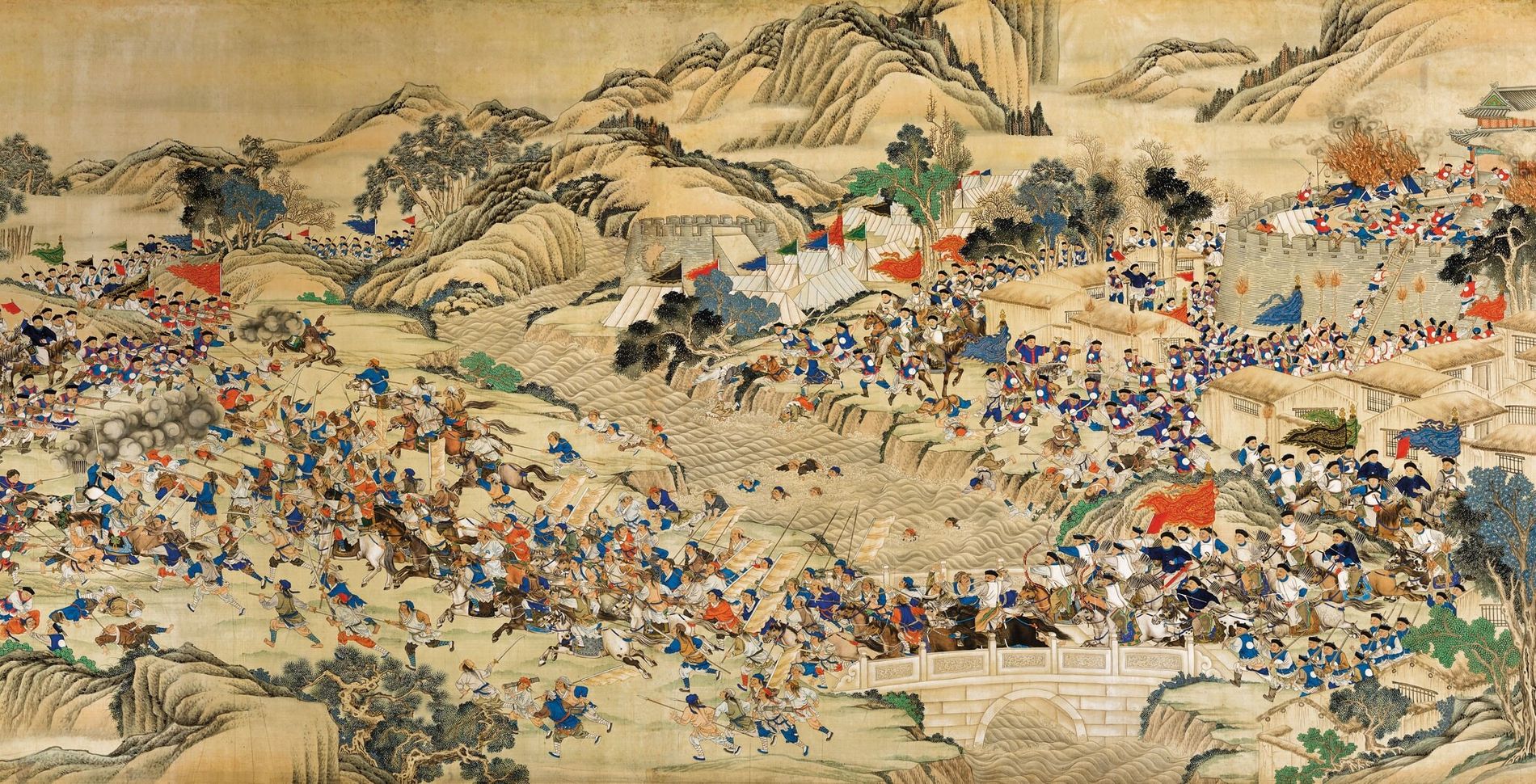
Taiping rebels fleeing from Chinese imperial troops - 1857 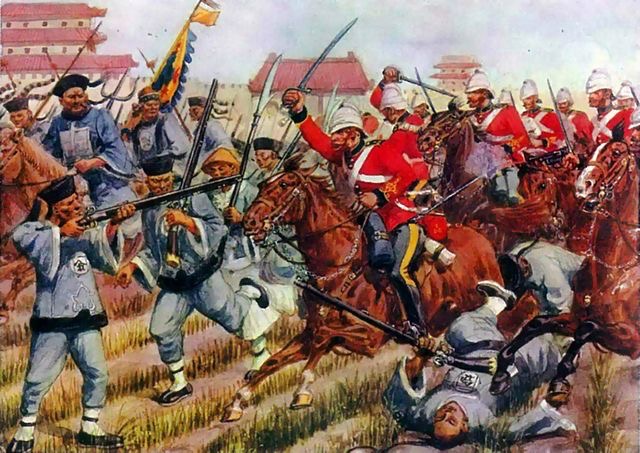
The British attack on Beijing during the Second Opium War - 1860
|
Korea (1866)
In the 1700s French missionaries in Korea had brought thousands to
Catholicism. In 1866 the Korean king order the mass execution of
French priests operating in Korea ... and some ten thousand Korean
converts. The French retaliated ... but for the moment with no
success.
Japan and the beginning of the Meiji Restoration (1867-1868). In
Japan the young emperor moved to make the emperorship more than just a
symbolic position ... pitting himself against the Tokugawa Shogunate
which had been governing Japan since the 1600s. The emperor drew
on Western support and technology to make his move. But so
did the shogun ... thus drawing Westerners deeply into the
contest. In the end critical Western support of the emperor
helped him bring to defeat the shogun and his troops ... ending the
reign of the shoguns and the restoration of imperial Japan. Under
the emperor Meiji, the modernization of Japan would continue, but under
the management of the Japanese themselves. The Westerners would
participate, but in a more passive fashion than was the case elsewhere
in Asia.
|
|
Japan and the beginning of the Meiji Restoration (1867-1868)
In Japan the young emperor moved to make the emperorship more than just
a symbolic position ... pitting himself against the Tokugawa Shogunate
which had been governing Japan since the 1600s. The emperor drew
on Western support and technology to make his move. But so
did the shogun ... thus drawing Westerners deeply into the
contest. In the end, critical Western support of the emperor
helped him defeat the shogun and his troops ... ending the reign of the
shoguns and the restoration of imperial Japan. Under the emperor
Meiji, the modernization of Japan would continue, but under the
management of the Japanese themselves. The Westerners would
participate, but in a more passive fashion than was the case elsewhere
in Asia.
|

The Emperor Meiji in traditional attire – Japanese Emperor 1867- 1912
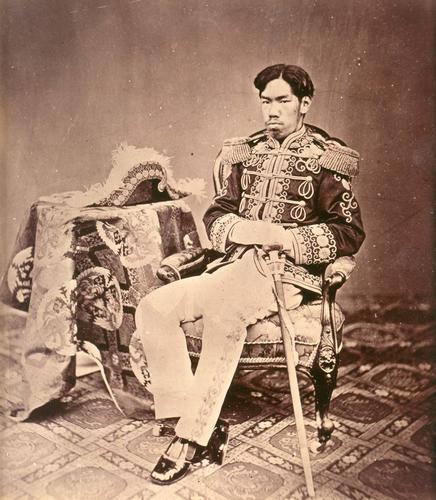 Emperor Meiji - 1873
Emperor Meiji - 1873
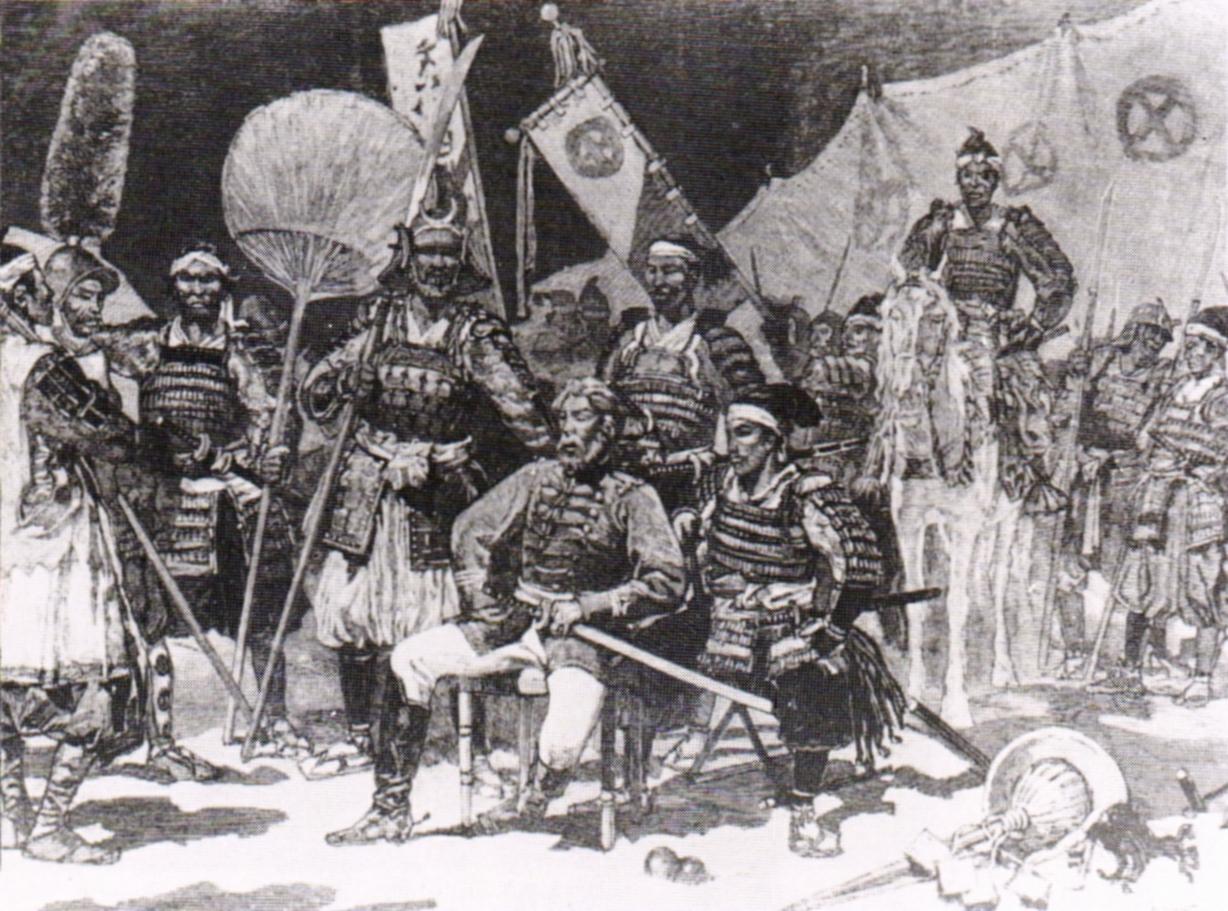
Samurai leader Saigo Takamori
with his officers during the Satsuma Rebellion - 1877
Le Monde
Illustré
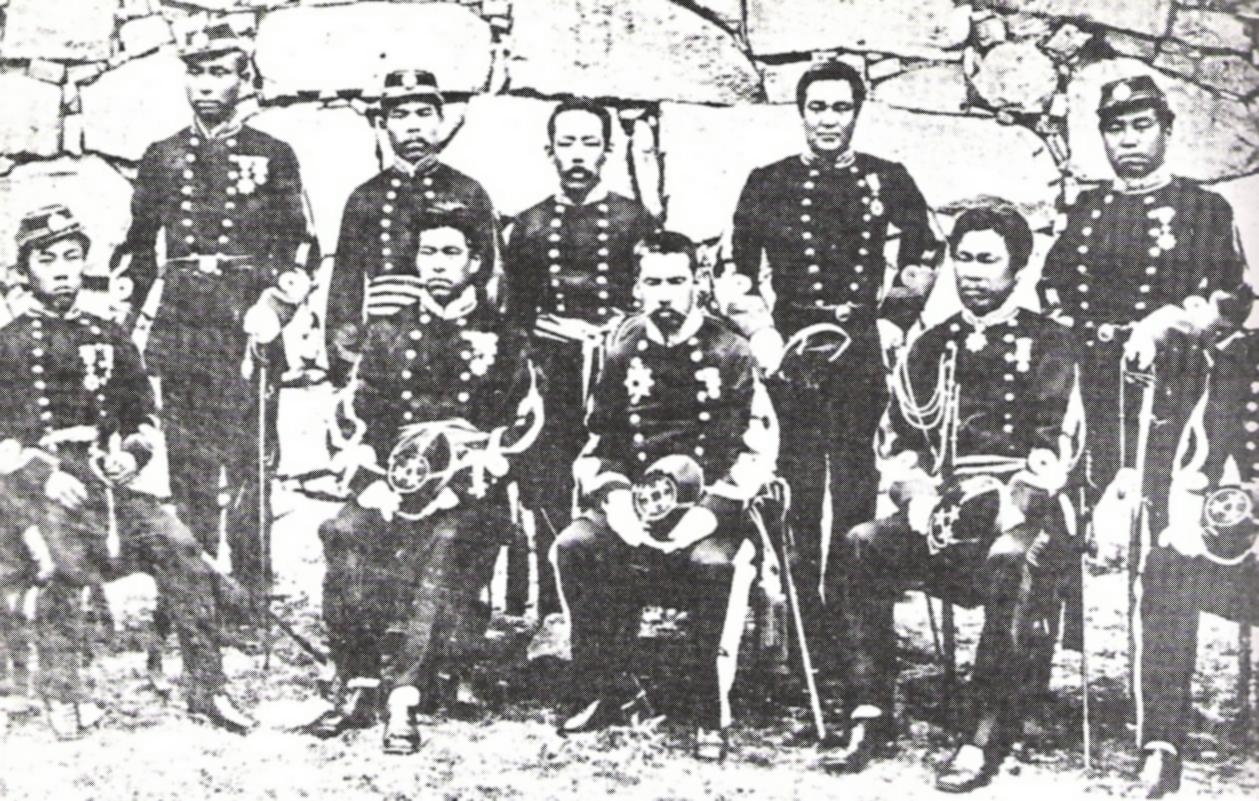
Imperial officers of the
Kumamoto garrison which fought against the troops of Saigo Takamori in
1877. Ancient photographs of the
Bakumatsu and Meiji period
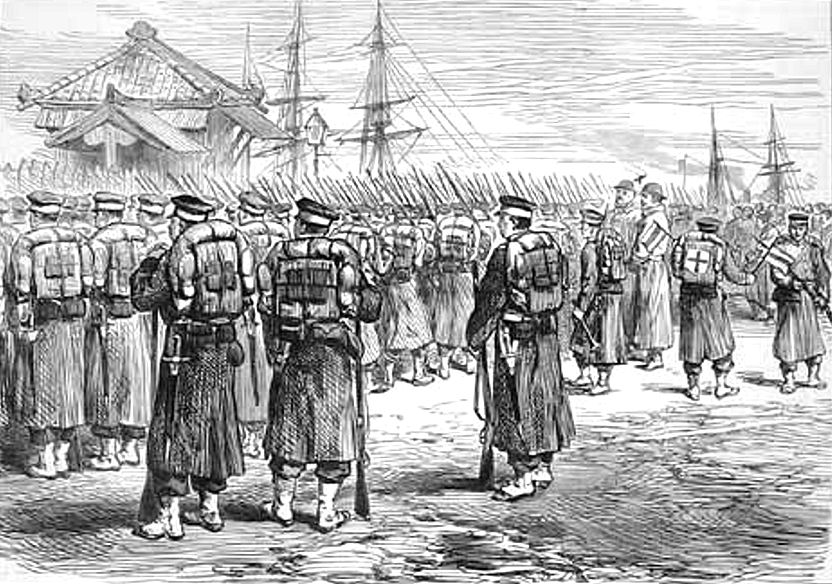 Japanese Imperial troops
embarking at Yokohama to put down the Satsuma Rebellion - 1877
Japanese Imperial troops
embarking at Yokohama to put down the Satsuma Rebellion - 1877
Illustrated London
News
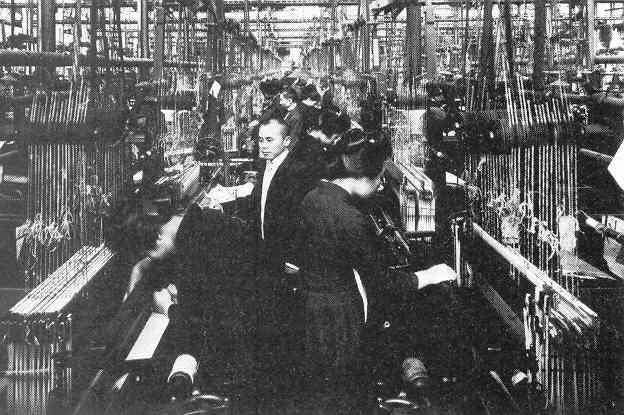 A Japanese silk factory -
1905
A Japanese silk factory -
1905
|
French Indochina (1858-1870)
In the southeastern corner of Asia where Indian and Chinese cultures
met (thus ‘Indochina’), Napoleon III decided to move on his own to
establish French dominance there ... ahead of the possible move of
other European powers. The French had held an interest in the
area since the 1600s when French priests arrived there to try to bring
the region under Catholicism. In 1858 the Vietnamese emperor,
sensing the dangers of the Western presence in Asia, attempted to expel
the missionaries. But here Napoleon was more successful in
opposing the move ... sending a combined French and Spanish-Filipino
military force to Vietnam, which overwhelmed the Vietnamese emperor’s
forces. He thus submitted to the French demand not only for the
protection of the Vietnamese Catholics, but the opening of Vietnamese
ports to French trading.
Then when French troops were removed to fight in China the emperor
broke the terms of the treaty ... until the French returned in 1862 and
demanded even more drastic supervisory rights in Vietnam. In 1864 the
area was then simply converted into a new French territory.
Once again, the French saw themselves as advancing under the imperative
of their mission civilisatrice ... endeavoring to bring superior French
culture to the "less advanced" peoples of Asia.
Meanwhile, next door in Cambodia, the Cambodian king involved the
French in his struggle against the Thai king who had formerly placed
him in power. Now the Cambodian king was hoping to get French
assistance in securing his independence from Thailand. In the end
a diplomatic settlement was achieved which gave Cambodia its
‘independence’... at the cost of the loss of part of Laos, which was
granted to Thailand in exchange. Nonetheless by doing so,
Cambodia now found itself operating completely under French
"protection."
|
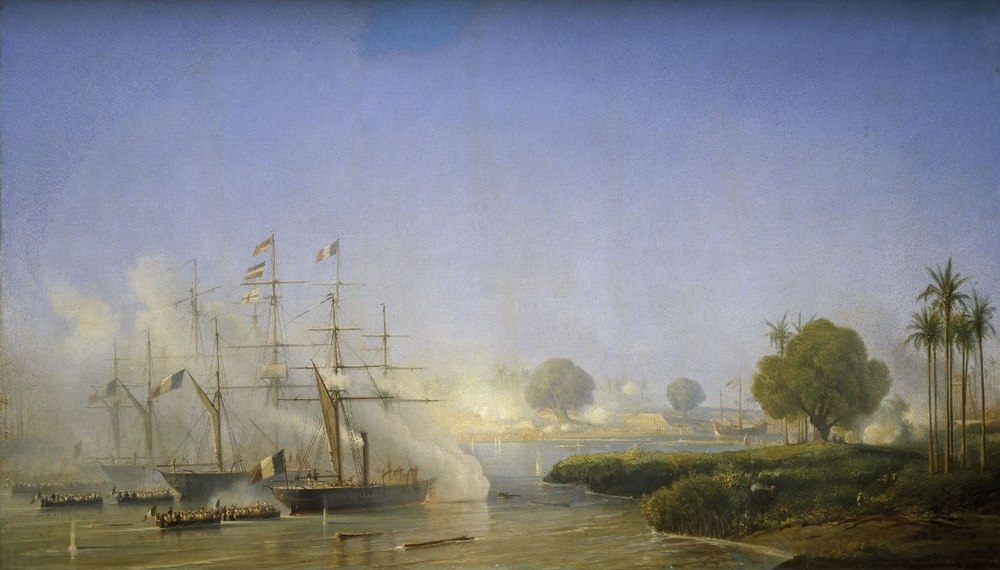
The Capture of Saigon by the French - February 18, 1859 - by Antoine Morel Fatio
|
Singapore
In 1819 the British signed a treaty with the local sultan allowing them
to develop a British East India Company trading post on a large island
at the very tip of the Malay peninsula, strategically placed to monitor
shipping moving between the Indian Ocean and the South China Sea.
Gradually this sparsely inhabited island began to grow in population,
heavily Chinese because of all the Chinese workers brought into the
settlement to work the rubber plantations developing there.
Indeed, by the 1870s Singapore had turned itself into the center of the
rubber industry.
|
|
The Dutch East Indies
The Portuguese had established commercial relations in the ‘Spice
Islands’ of Southeast Asia (roughly today’s Indonesia) as early as the
late 1400s. The trade was highly profitable ... and soon the
Dutch got involved through its United East India Company (the
Vereenigde Oostindische Compagnie or VOC), which established in 1619 a
commercial base at Batavia (modern Jakarta) on the Island of
Java. From there the Dutch constantly widened the sphere of their
control ... but lost that position briefly during the Napoleonic Wars
at the beginning of the 1800s when Napoleon placed his brother on the
Dutch throne and the British reacted by seizing the Dutch holdings in
Asia (also Africa). After the war the area was restored to the
Dutch (1816), with some exchanges of territorial control with the
British, as the British ceded their settlements on the neighboring
island of Sumatra to the Dutch in exchange for the Dutch holdings on
the Malay peninsula which were turned over to the British.
The Indonesians naturally had their own thoughts about this Western
imperialism, and there were a number of uprisings or wars by a number
of Muslim sultans against this Dutch intrusion, especially during the
last quarter of the 1800s. One by one they were suppressed,
although one of these uprisings, the Aceh War, lasted all the way until
1912.
|
|
The Boxer Rebellion (1899-1901)
Most
unsurprisingly, the Western intrusion into China had a huge impact on
Chinese society ... part of China deciding that the proper response to
the overbearing Western presence was simply to adapt China to Western
ways, in the hopes that this might restore China to greatness ... or at
least soften the impact of the West's intrusion into China. But
other Chinese grew increasingly bitter over this Western intrusion,
angry not only at the Westerners overrunning their country ... but even
angrier at the Chinese who had somehow accommodated themselves to this
Western intrusion.
Unsurprisingly, A Chinese secret society, the Righteous and Harmonious
Fists ("Boxers"), had been forming in reaction to this Western
intrusion, dedicated to the complete removal of these non-Chinese
influences ... and also any of their own people who had allowed
themselves to fall under the sway of the Western outsiders. And
remove such individuals they did ... most bloodily. And as
terrible as the treatment of the Westerners was, the Boxers' treatment
of their own Chinese "traitors" was far worse (specifically targeted
were thousands of Chinese Christians).
But the Chinese behavior served importantly to unify the Westerners
(and also bring Japan into action on the side of the Westerners) as an
8-nation alliance which brought in a combined total of about 20
thousand troops, and fairly quickly but also very bloodily crushed the
rebellion.
The Chinese government (actually not part of the uprising) was forced
by angry Westerners to agree to pay a huge reparations payment ...
which in fact greatly exceeded the Qing's total tax revenues ... for a
period of 39 years. At this point the Qing dynasty was virtually
finished.
|
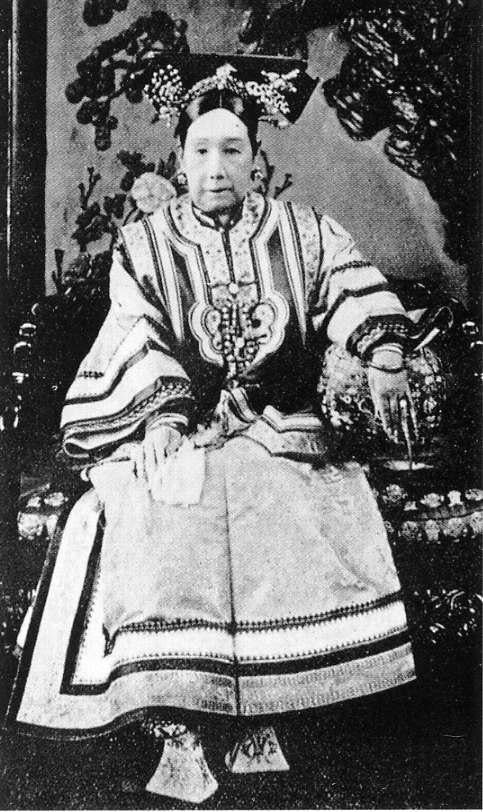
Chinese Empress Dowager T'zu-Hsi
(reigned 1862-1908)
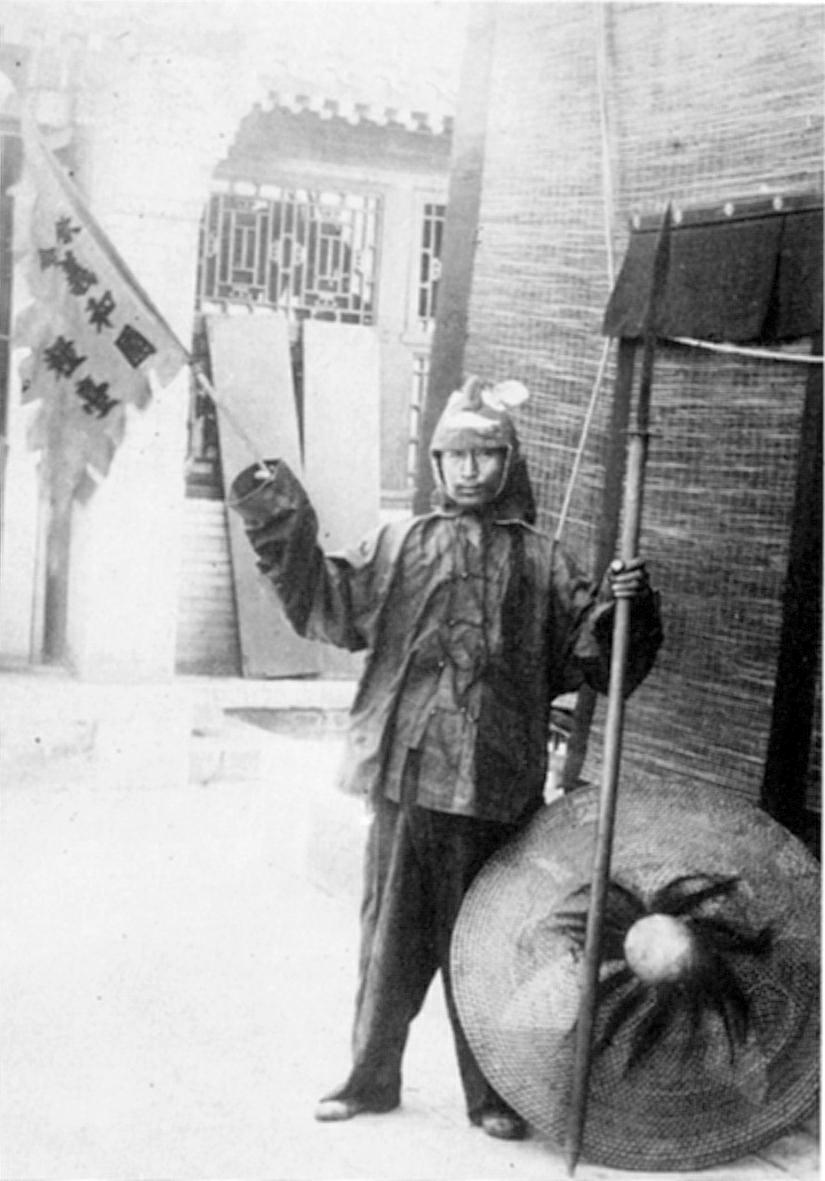
Chinese "Boxer" - 1900
National Archives
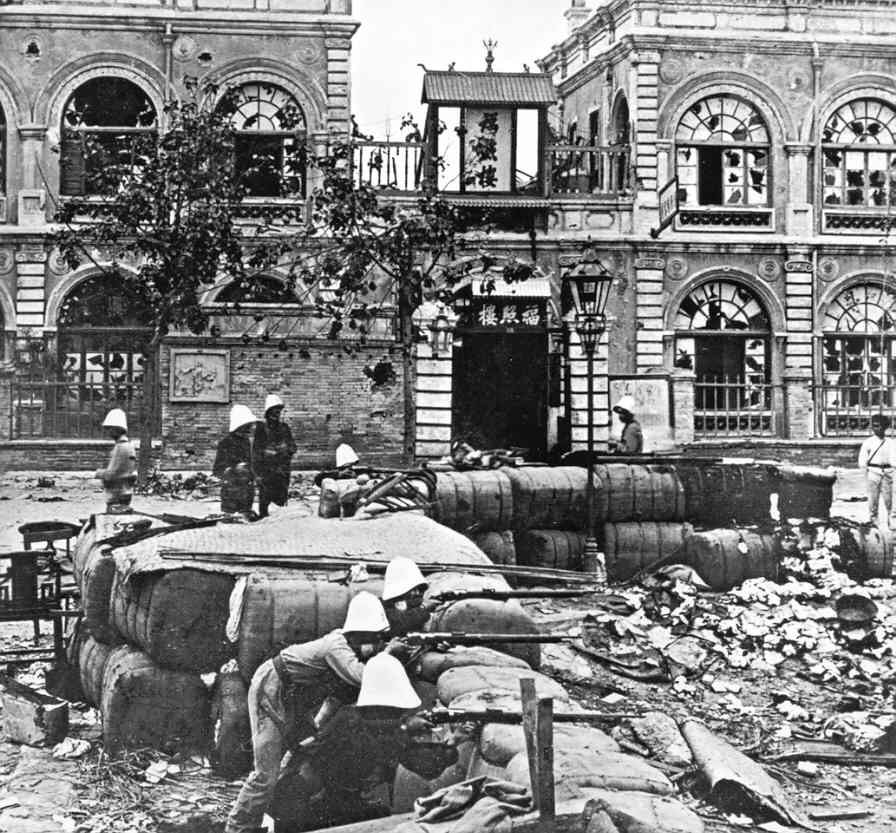 French barricades
French barricades
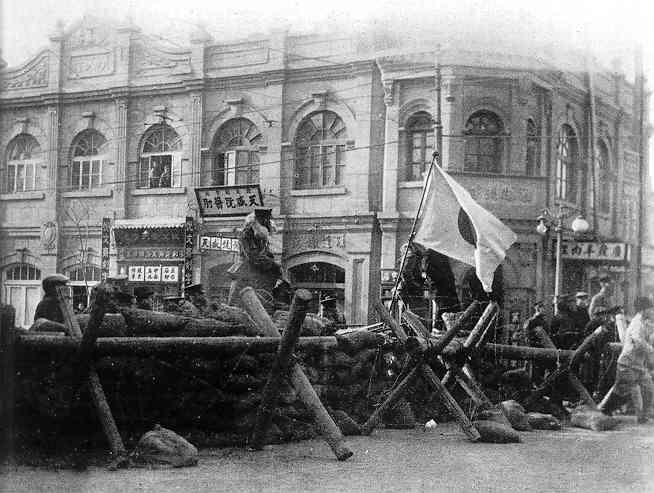 Japanese barricades
Japanese barricades
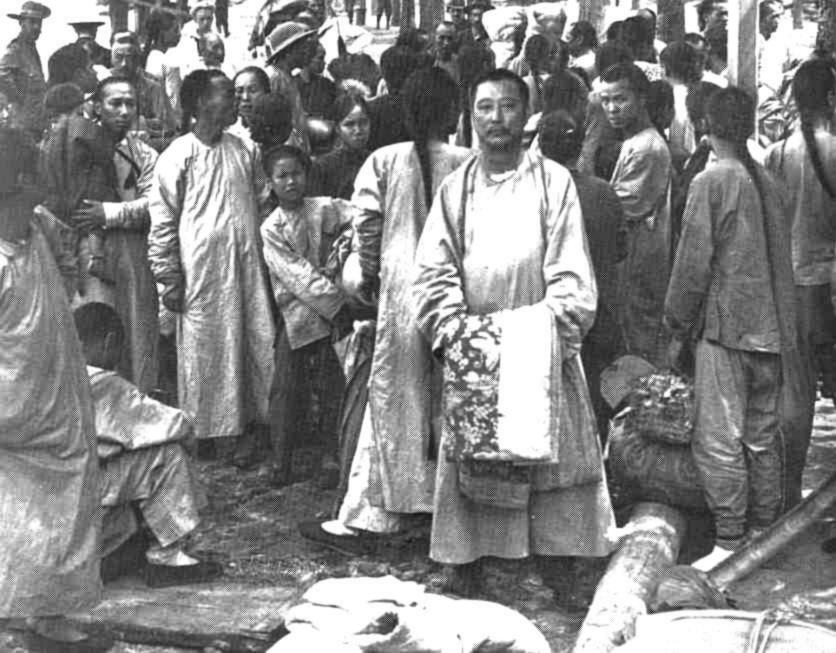 Chinese refugees who have
fled to Tianjin (Tientsin)to escape the violence of
the Boxer Rebellion (1900)
Chinese refugees who have
fled to Tianjin (Tientsin)to escape the violence of
the Boxer Rebellion (1900)
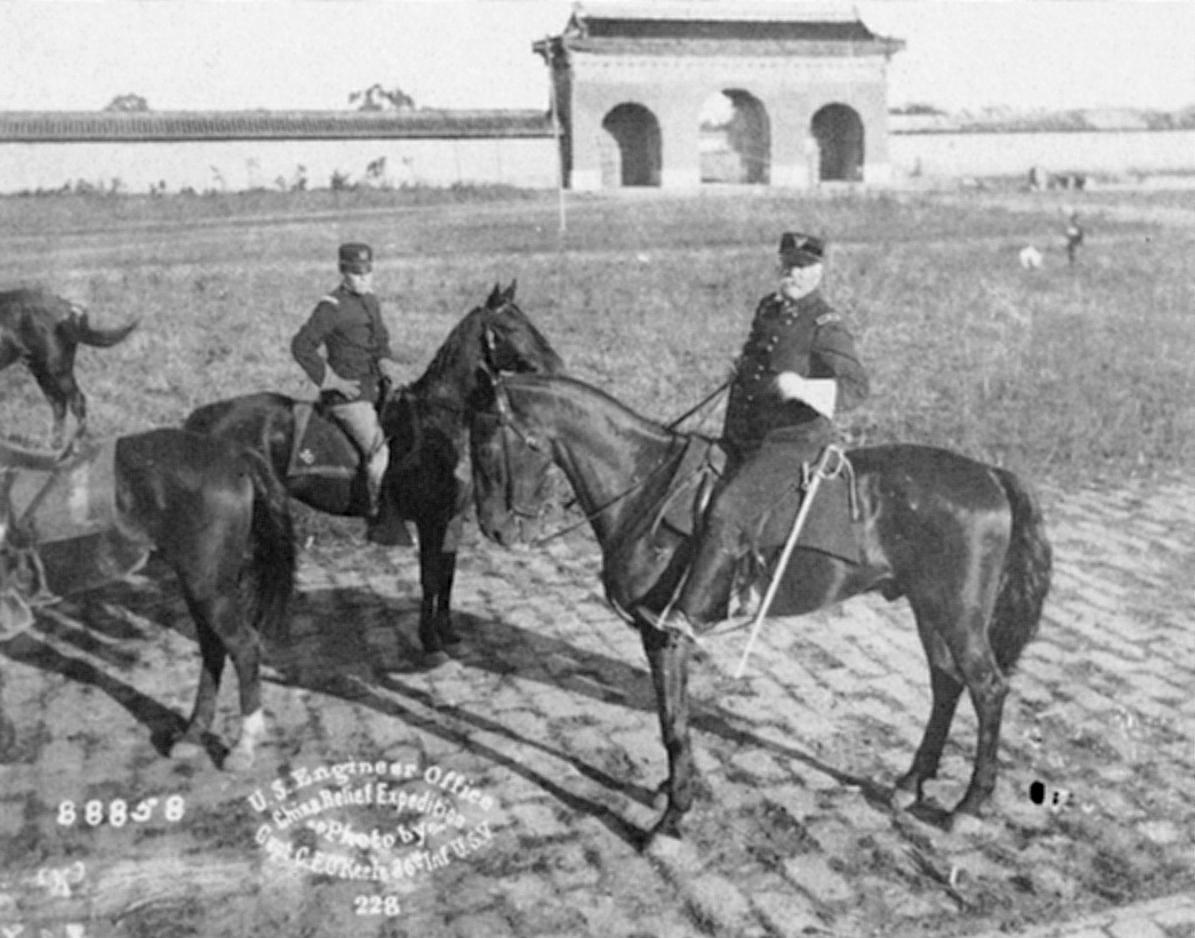
American Brig. Gen J. H. Wilson, U.S.V.,
and Lieutenant Turner, 10th Infantry, Aide de Camp. Temple of Agriculture, Peking.
1900. photo by Capt. C. F. O'Keefe.
National Archives
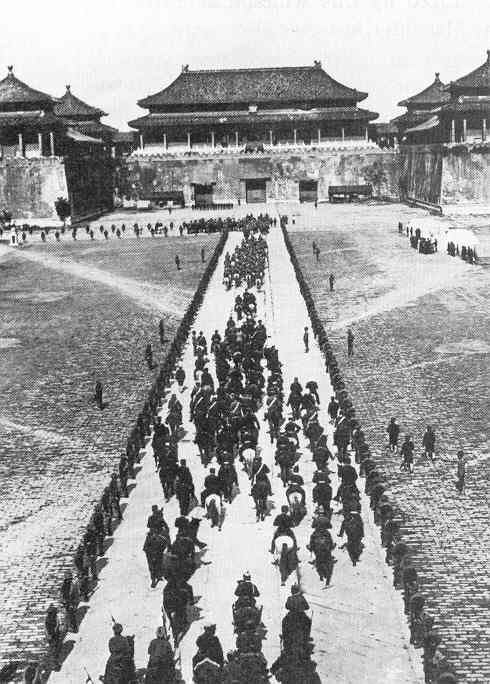 German troops entering Beijing
after the collapse of the Boxer Rebellion, 1901
German troops entering Beijing
after the collapse of the Boxer Rebellion, 1901
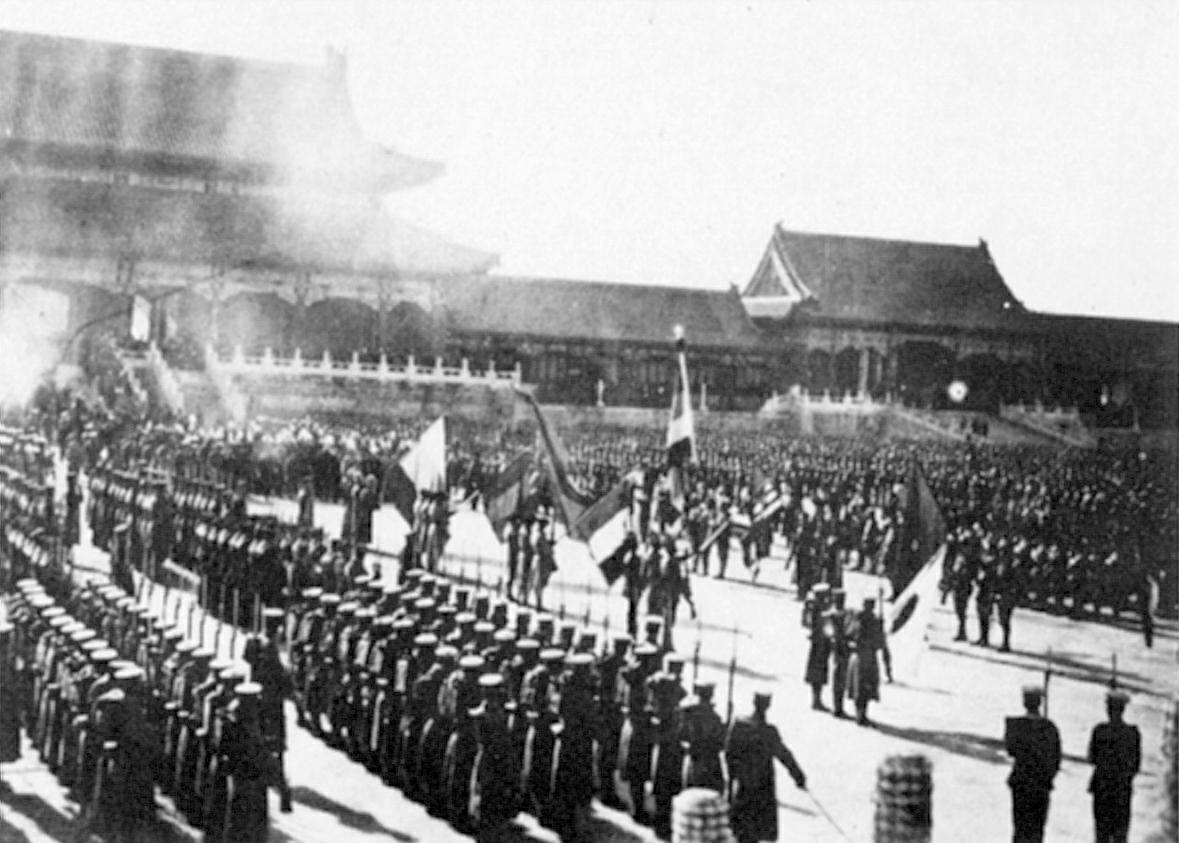
"Within historic grounds
of the Forbidden City in Pekin, China, on November 28, celebrated the victory of
the Allies." - 1900
National Archives
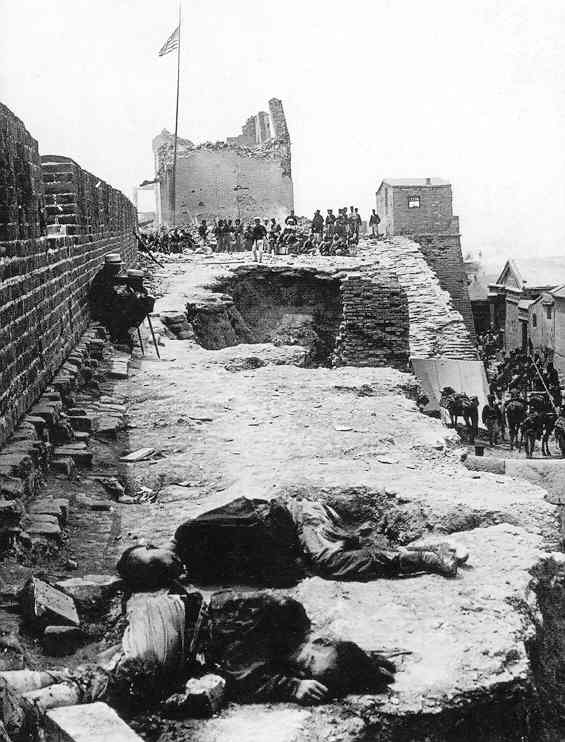 Dead Boxers outside the walls
of Beijing
Dead Boxers outside the walls
of Beijing
 Destruction of the Western
Diplomatic Quarters in Beijing
Destruction of the Western
Diplomatic Quarters in Beijing
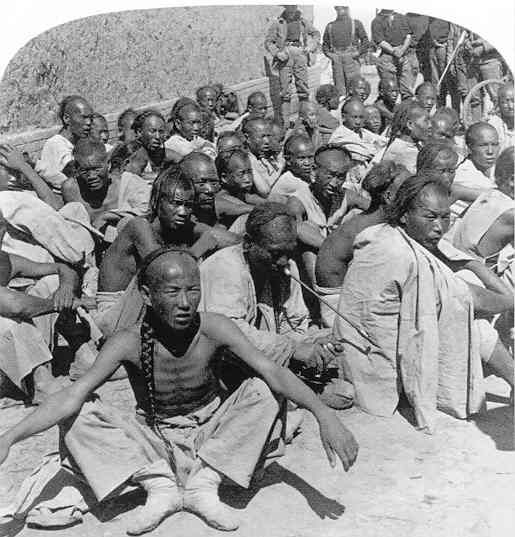 Boxers awaiting
execution
Boxers awaiting
execution

Boxer about to be
executed
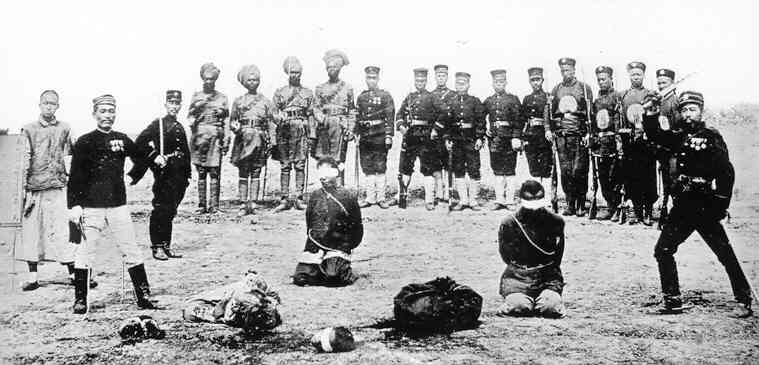 Japanese executing Boxers
as Indian and Japanese troops look on
Japanese executing Boxers
as Indian and Japanese troops look on
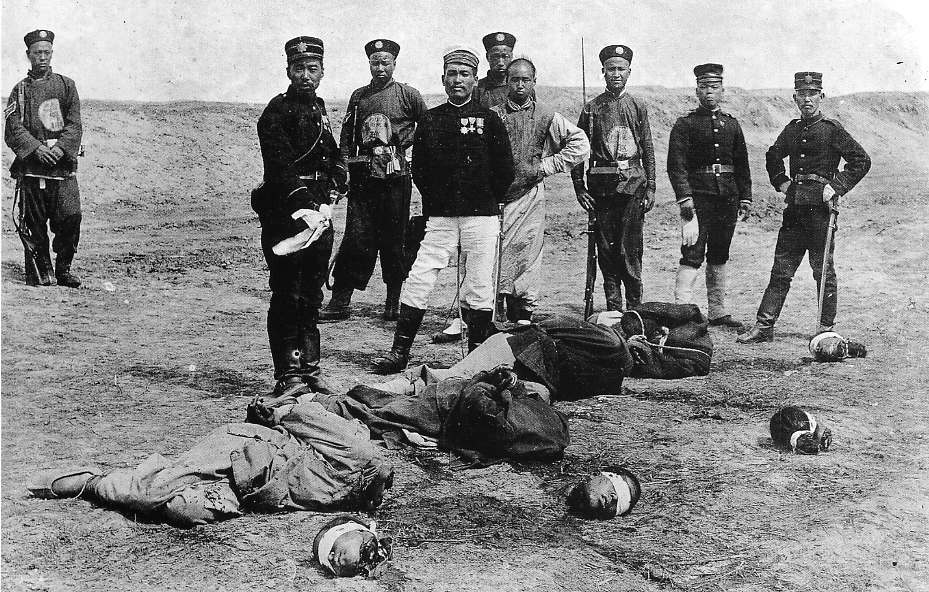
Chinese Boxer rebels executed
by Japanese soldiers - 1900
American Museum of Natural
History
EUROPEAN IMPERIALISM IN THE MIDDLE EAST |
|
The Suez Canal
In the early 1800s Europeans began to explore the idea of digging a
canal in Egypt that would link the Mediterranean to the Red Sea and the
Indian Ocean beyond ... a much shorter route than by reaching Asia in
going South around Africa. It was the French who took the
initiative to actually begin the project when Ferdinand de Lesseps
received from the Egyptian khedive (Muhammad Ali’s grandson) in the
mid-1850s permission to construct the canal. A commercial company
was formed to finance and direct the construction of the canal and work
on the canal began in 1859.
Over the next ten years tens of
thousands of Egyptian laborers worked under severe conditions to
complete the canal (thousands also dying in the process). The
British, afraid that the canal might increase the competition for its
favored trading position in the East-West trade, were opposed to the
project and did what they could to have it stopped. Nonetheless
the work went forward and the canal was opened for business in 1869 ...
although the project cost twice the anticipated amount and the Suez
Canal Company found itself in deep financial trouble. The result
was that in order to avoid bankruptcy, the khedive was forced to sell
his shares in the company ... to the British, who bought him out in
1875 (Prime Minister Disraeli pushing hard to seize this
opportunity)! This now began the period of active British
involvement in the affairs of Egypt. Indeed, in 1882 the British
(at the invitation of the Khedive) moved troops into Egypt ... to
protect their investment in Egypt from a spreading rebellion among
angry Muslim traditionalists organizing up the Nile River in the Sudan.
Syria / Lebanon (1860-1861)
When it became apparent that the Ottoman Sultan’s forces were unable to
stop the murderous violence between Christians and quasi-Muslim Druzes
that had erupted at the beginning of 1860 in the region of Lebanon ...
and then spread quickly to the surrounding Syrian region ... Napoleon
III took the initiative of intervening there on behalf of the Christian
community (again, with the British opposed, because they did not want
to see French imperial influence expanded there). French troops
sent that summer quickly separated the warring parties ... and then
Napoleon called an international conference in Paris to work out peace
terms. The next summer Napoleon pulled his troops out of the
region having achieved peace ... a hero in the eyes of his
Frenchman. France would henceforth be a serious factor in future
developments within the region.
The Balkan peninsula
With the Ottoman Turkish Empire in a clear state of decline, the
temptation presented to the major European powers to take whatever
control they could in the Balkan region of Southeastern Europe became
too great to resist. Especially ambitious in this matter was the
Austro-Hungarian Empire, landlocked in central Europe ... and hoping to
pick up a coastal position on the Mediterranean in order to position a
naval base there of its own. But Russia, itself failing to have
any unimpeded access to the Mediterranean, was just as ambitious in
this matter.
However, the same Ottoman decline also increased greatly the rising
spirit of nationalism of Ottoman Turkey's former subject peoples in
that same Balkan region (Greeks, Bulgarians, Romanians, Serbs, etc.).
But remembering the devastation caused by the Napoleonic Wars, and the
way those wars led the Europeans to fall into devastating conflict with
each other, the major powers gathered in Berlin in 1878 ... in part to
decide how they wanted to quietly divide up the dying Ottoman Empire,
theoretically still governing parts of this strategic region.
They wanted no wars among themselves to arise from this shift in the
European power picture.
They ultimately decided to leave the matter to the newly rising, local
interests of the Greeks, Serbs, Bulgarians, etc. ... Christian
societies eager to confirm formally their independence from the Ottoman
Empire ... even to gain the rights to expand their holdings in the
region as free nations.
The Turks were naturally part of these discussions, not really happy to
see what was happening to their empire, but not in a position to do
much diplomatically on their own behalf.
And so it looked as if the European powers had succeeded in preventing
a thorny question close to home (right there in Europe itself) distract
them from looking further abroad where much greater imperial challenges
awaited them. But all of this still left unanswered the question
of how the Serbs, Greeks, Romanians, Bulgarians (and other locals) were
going to hold onto that same diplomatic caution ... as each of them
began to look for greater national expansion in the surrounding Balkan
world. This was going to produce some serious conflicts among
these local players. Ultimately this problem would become one
monumental in size ... the cause of the startup of World War One in
1914.
|
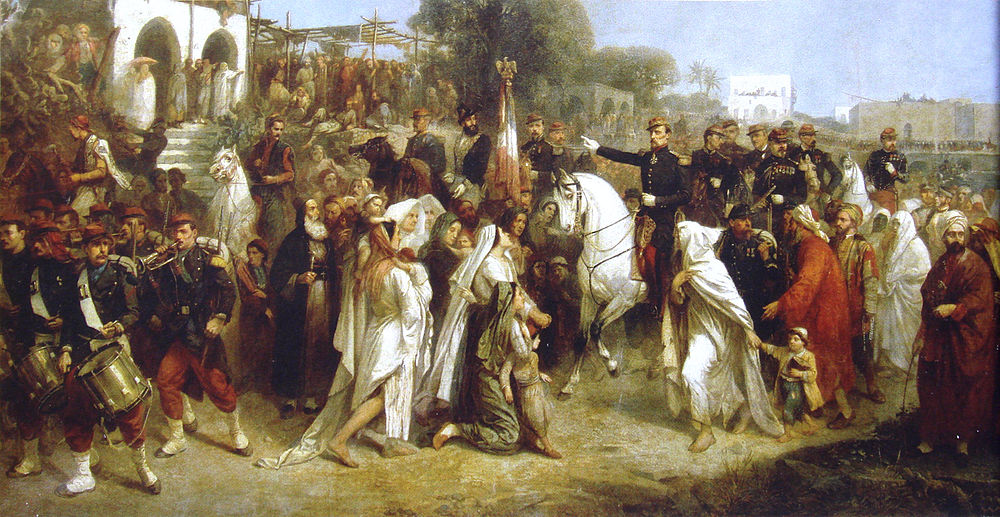
A French expeditionary force landing in Beyrouth (Beirut) - August 16, 1860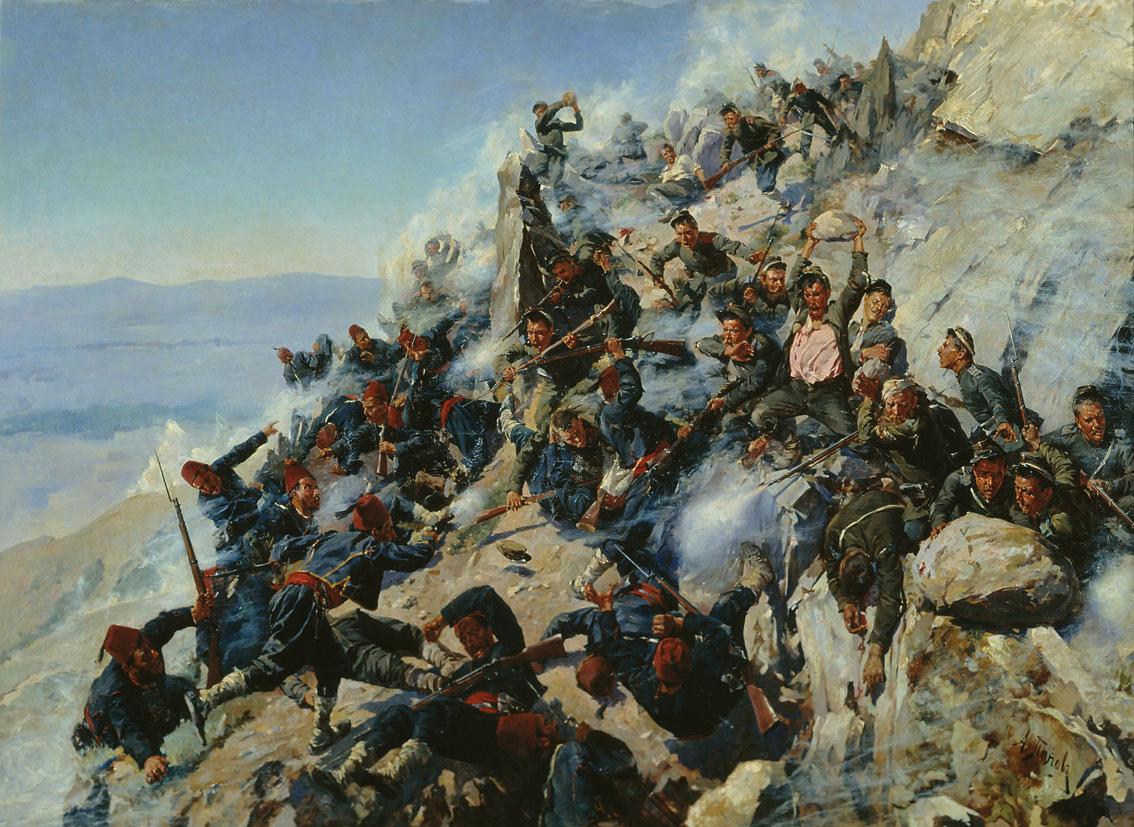
Russian and Bulgarian troops
defend the Eagle's Nest at the height of the Shipka Pass in the Balkan Mountains
against Ottoman Turks - 1877 – by Alexey Popov, 1893
K. Savitsky Art Museum,
- Penza, Russia
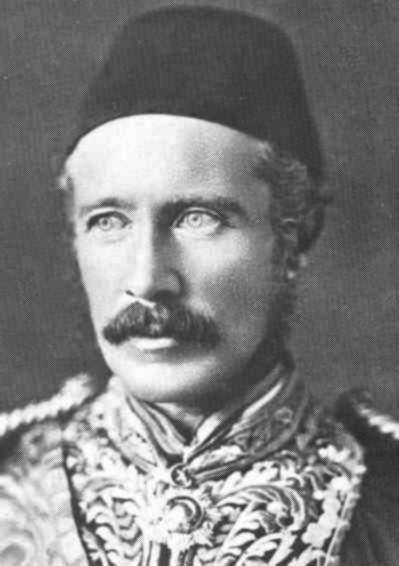 British General Charles
Gordon
British General Charles
Gordon
THE PARTITIONING OF AFRICA |
With
the exception of the Dutch (the Cape) and Portuguese (Angola and
Mozambique) colonies in southern Africa, Europeans had involved
themselves with Sub-Saharan Africa only marginally, setting up trading
posts (prior to the early 1800s mostly concerned with the slave trade)
and naval refueling posts at various points along the African
coastline. What lie beyond coastal Africa remained largely
unknown to the European. To them Africa was a "dark" and
dangerous continent: unbearable heat, jungle growth, malaria and
dangerous tribes made the costs of exploration and settlement appear
greater than the possible rewards.
But attitudes on this matter were changing by the
mid-1800s. Christian missionaries were beginning to explore
the interior hoping to improve both the spiritual and physical life of
Africa. Most prominent among these missionaries was the medical
missionary David Livingstone operating under the London Missionary
Society. Newspaper accounts of his exploration of the dark
continent in an effort to map out the African interior ... but also in
the face of constant sickness and physical hardships ... stirred a
great interest among Europeans and Americans. Then when
Livingstone disappeared from view, an American journalist, Henry
Stanley, decided to go searching for Livingstone. He not only
finally discovered the doctor but subsequently in return visits
(1878-1885) discovered as well the vast riches of the African
interior. In this he was supported by the Belgian king Leopold II
who was also interested in the further exploration of this African
wealth. Soon Stanley’s ability to gain for Leopold trading
rights with the local tribal chiefs finally stirred the interest of
other European monarchs. The French dispatched Pierre de Brazza
to the same area and established in 1881 a French base on the Congo
River at what would become Brazzaville. That same year they also
expanded their French reach in the north of Africa from Algeria
eastward to Tunisia and in 1884 to the west of Africa in the region of
today’s Guinea.
The Berlin Conference of 1884-1885
When Germany began to show interest in the scramble for
African territory, Bismarck invited fellow Europeans to hold a
conference in Berlin to decide how to apportion spheres of European
influence across the African continent.
Representatives
from America and nearly all of Europe gathered in Berlin in late 1884
to sit down with the sketchy map of Africa ... and decide on basic
rules (including the requirement of "effective occupation") guiding the
carving up of Africa into colonial domains. Leopold subsequently
had his holdings in the Congo region (what would eventually become the
Congo Free State) confirmed by fellow European monarchs. The
Portuguese, the Dutch Boers and the British had their previous
positions in southern Africa also confirmed. And Britain’s
position in Egypt, including assigned dominance in the Sudan and the
upland sources of the Nile (but also reaching across Uganda and Kenya
to the Indian Ocean) was also confirmed by the other Europeans.
The rest of sub-Saharan Africa, east and west, was then divided among
the English, French (the French getting most of Saharan West Africa),
Germans, Spanish and Italians. Only Liberia (an American creation
earlier in the century ... as a home for American slaves repatriated to
Africa), the Sultanate of Morocco, and the Christian Kingdom of
Ethiopia were left unassigned.
|
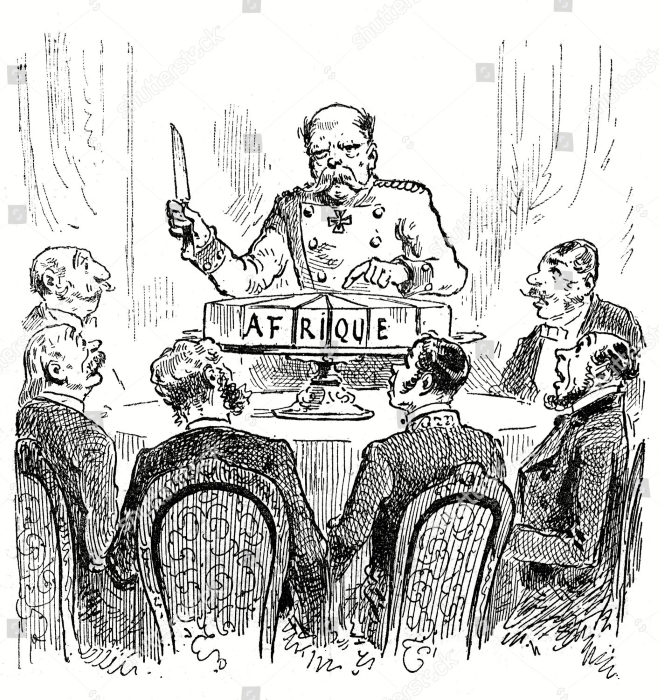
The Berlin Conference of 1884 - Bismark directs the carving up of Africa
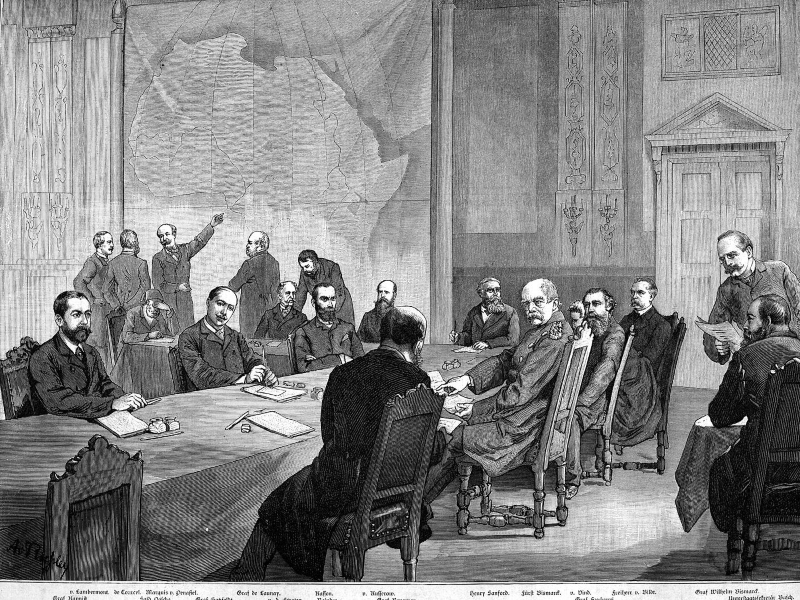
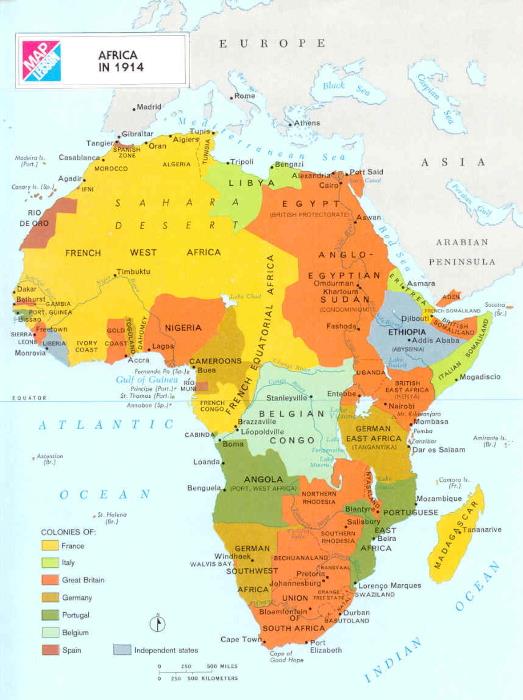
Africa partitioned into European imperial holdings
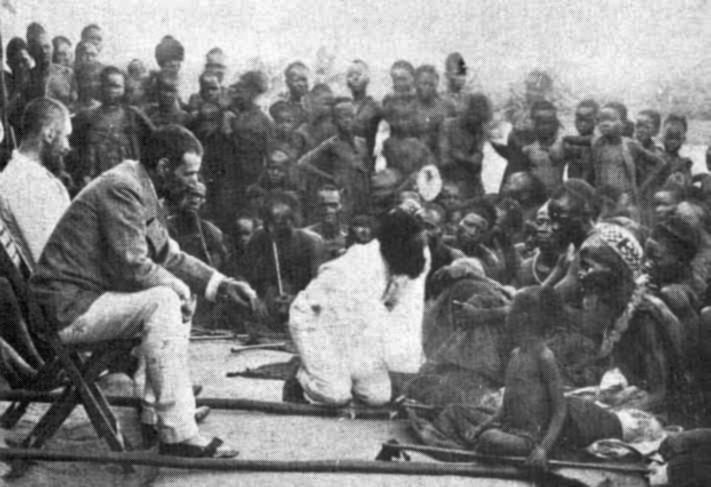 French explorer Pierre Savorgnan
de Brazza in Africa
French explorer Pierre Savorgnan
de Brazza in Africa
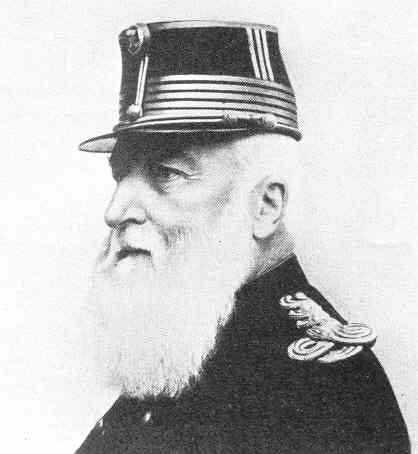 King Leopold of Belgium who
ran his private Congo landholding like a tyrant
King Leopold of Belgium who
ran his private Congo landholding like a tyrant
Belgian Government Information
Center
Now
a race of sorts was on. Nationalist spirits were pumped up by a
rivalry that was supposed to be orderly, following certain diplomatic
rules, and involving literally the entire world as an object of
European domination (the Americans also wanting into the game).
Navies were critical to the ability to put a national player in
position to follow imperial designs, and a naval race of sorts began to
unfold among the Europeans ... much to the distress of Britain which
felt its dominant position on the high seas threatened by all this
buildup ... especially by the German buildup once Wilhelm II took over
from Bismarck in 1890.
Alliances were beginning to be formed among the competitors, in the
hope that these would advance the political leverage of the national
contenders. In 1879 Bismarck signed a pledge with Austria-Hungary
that promised German aid if Russia were to attack Austria (and
vice-versa). The agreement was also that if Germany or Austria
were to be attacked by some other European power, the partner in this
alliance would at least remain neutral (the unspoken understanding
being: "in case of an attack by France"). Bismarck knew how badly
the French wanted the lost provinces of Alsace and Lorraine back ...
and expected trouble from the French on that account. In 1882 the
alliance was expanded to include Italy ... mostly to bring Italy into
an alliance aimed at France (Italy purposely excluded Britain as a
potential adversary). This would be the beginning of an
alliance system that would push the European powers dangerously close
to a war that could ... and would ... quickly get out of hand.
But for the moment, no one saw the dangers ... yet.
|

 Miles
H. Hodges Miles
H. Hodges
| |


 Defining "imperialism"
Defining "imperialism"
 The early stages of French imperialism
The early stages of French imperialism
 America joins the imperialist game
America joins the imperialist game
 Western imperialism in China and East
Western imperialism in China and East
 European imperialism in the Middle East
European imperialism in the Middle East






























 Emperor Meiji - 1873
Emperor Meiji - 1873
 A Japanese silk factory -
1905
A Japanese silk factory -
1905






















































































